TCL C69B or otherwise C655 in its smallest sizes (43 and 50") is a model that stands out primarily due to its Google TV system. The interface is simple and intuitive, and accessing favourite apps is hassle-free. Personalised recommendations make it easier to decide what to watch, and voice search in Polish works quickly and efficiently. In terms of picture quality, C69B / C655 performs well, especially for its price. Thanks to quantum dot technology (PFS), colours are vibrant, and Dolby Vision support makes HDR movies look quite decent. The contrast is sufficient for everyday viewing, but the brightness level of 350 nits may pose a problem in very sunny rooms. However, in less demanding conditions, the TV performs quite solidly – details are well visible, and the black levels are decent, though not perfect. For gamers, it’s more of an option for relaxed, casual gaming. The 60 Hz panel doesn’t provide the smoothness of more expensive models, but the low input lag ensures good responsiveness. The Game Bar feature allows you to quickly change settings without leaving the game. This is not equipment for die-hard gamers, but at this price point, it’s hard to expect more. There are, however, some limitations. The screen brightness and lack of recording functionality may be bothersome, especially if we're used to more advanced solutions. Picture-in-picture (PiP) is another feature that's missing here – this can be an issue for multitasking enthusiasts. With HDR content, it's also evident that the TV doesn’t handle bright scenes as well as higher-end models. In summary: C69B / C655 is a TV that works best for everyday use. Google TV makes life easier, and the picture quality will satisfy most people, especially if we don’t expect perfection. It’s a device for watching TV, movies, and casual gaming that won’t strain your budget, while still offering solid fundamentals to fit in places where larger TV sizes simply won't fit.
- Matching (Score)
- Our verdict
- TV appearance
- Where to buy
- Contrast and black detail
- HDR effect quality
- Factory color reproduction
- Color reproduction after calibration
- Smoothness of tonal transitions
- Image scaling and smoothness of tonal transitions
- Blur and motion smoothness
- Console compatibility and gaming features
- Input lag
- Compatibility with PC
- Viewing angles
- TV efficiency during daytime
- Details about the matrix
- TV features
- Apps
- Playing files from USB
- Sound
TCL C655 / C69B (43" - 50") vs TCL C7K / QM7K
Direct compare
C655 / C69B
C7K / Q7C / MQLED85K / C79K / C71K / QM7K
Available screen sizes: 50”

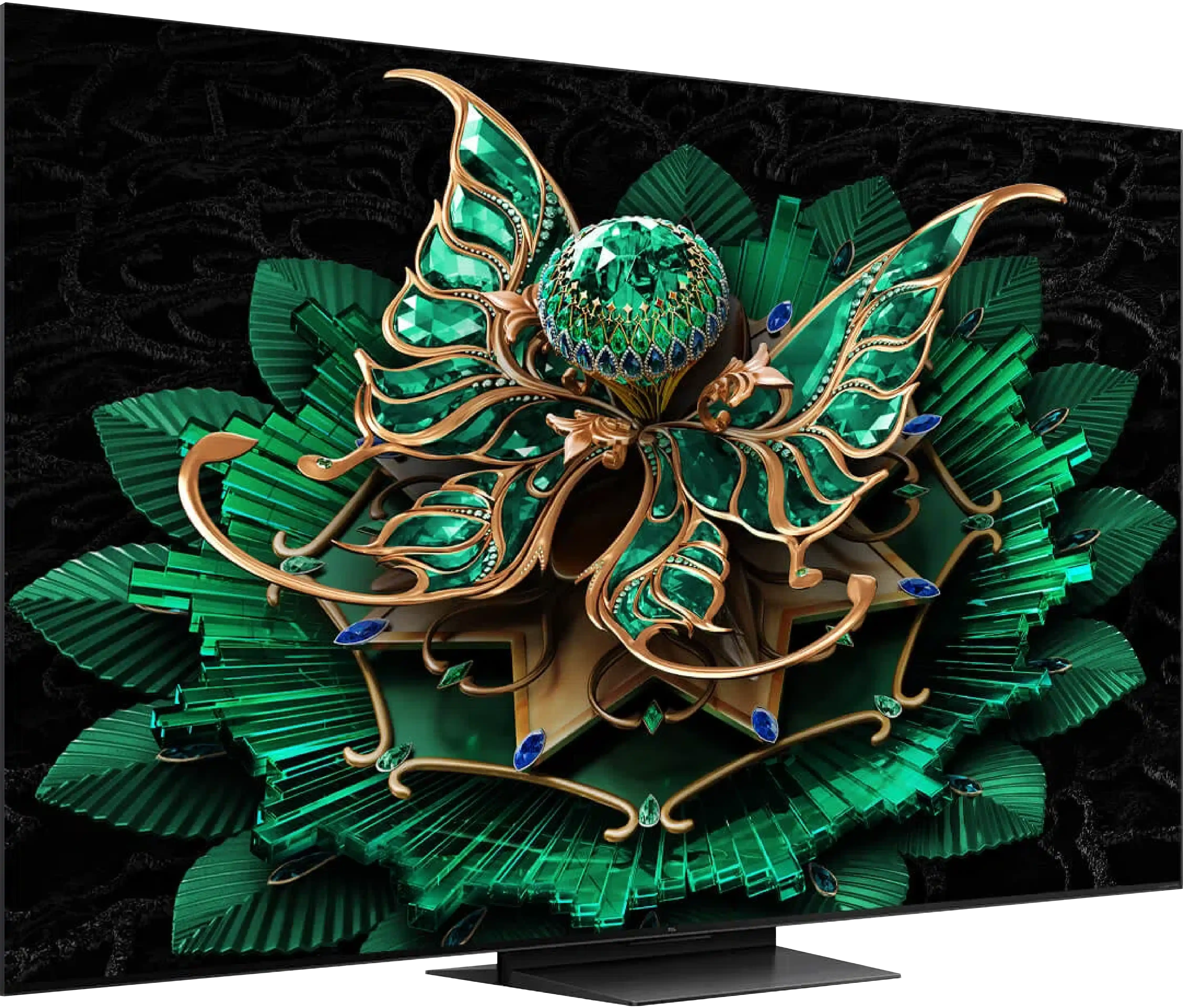
Panel type: LCD VA
Resolution: 3840x2160
System: Google TV
Model year: 2024
Complete the survey to find out the result

Panel type: LCD VA
Resolution: 3840x2160
System: Google TV
Model year: 2025
Complete the survey to find out the result

Overall rating
5.9
7.2
Movies and series in UHD quality
5.5
6.7
Classic TV, YouTube
5.6
6.5
Sports broadcasts (TV and apps)
5.1
6.6
Gaming on console
6.9
8.5
TV as a computer monitor
5.0
8.4
Watching in bright light
4.7
6.1
Utility functions
7.0
7.3
Apps
9.6
9.6
Sound quality
6.3
7.0
Complete the survey to find out what fits your preferences
Advantages
Google TV
Low input lag
High native contrast
Supports all HDR formats
Good for "casual" gamers - supports VRR, ALLM, Game bar
Very good black - VA panel with a large number of Mini-LED zones
High brightness in HDR - over 1000 nits
Great for gamers - HDMI 2.1, low input lag, VRR, ALLM etc.
Good motion fluidity - 144Hz panel
Support for multiple HDR formats: HDR10, HDR10+, Dolby Vision
Google TV operating system with access to a huge app base
Pleasant sound from built-in speakers
Disadvantages
Average brightness
No recording function and PiP
Google TV can have minor stutters
No USB recording and PiP function
Our verdict
There are TVs that come for testing, and you immediately think: "oh, just another average one, probably like many others." And essentially... that's true. The TCL C7K doesn't try to dethrone OLEDs, nor does it scream "revolution!" from the box. And yet, after a few days of testing, it's hard not to think: "wow, this is really good gear." And that's exactly what the C7K is. The biggest advantage of the C7K is the decent picture at a reasonable price – MiniLED and quantum dots do their job here. The colours are vibrant, the brightness is satisfactory, the contrast impresses, and with the right settings, you can truly enjoy viewing in the best quality. The second strong point is motion smoothness – both in sports and gaming. Support for HDMI 2.1, variable refresh rate, 144 Hz, and a whole heap of other features makes gaming on this TV a pure pleasure. On top of that, there's Google TV, which – despite some minor shortcomings – offers access to almost an endless library of apps. Voice control, quick access to YouTube, Netflix, AirPlay support – it has everything you need for daily use. Are there downsides? Of course. The Google TV system can have moments of "hesitation," and MiniLED – like any MiniLED – can stumble on very challenging movie scenes. But these are details. After all, the C7K is a mid-range model – and in this class, it performs remarkably well. So if you’re looking for a reasonably priced, modern TV with Google TV that looks good, works well, and sounds pretty decent without breaking the bank – the TCL C7K definitely deserves your attention.
TV appearance




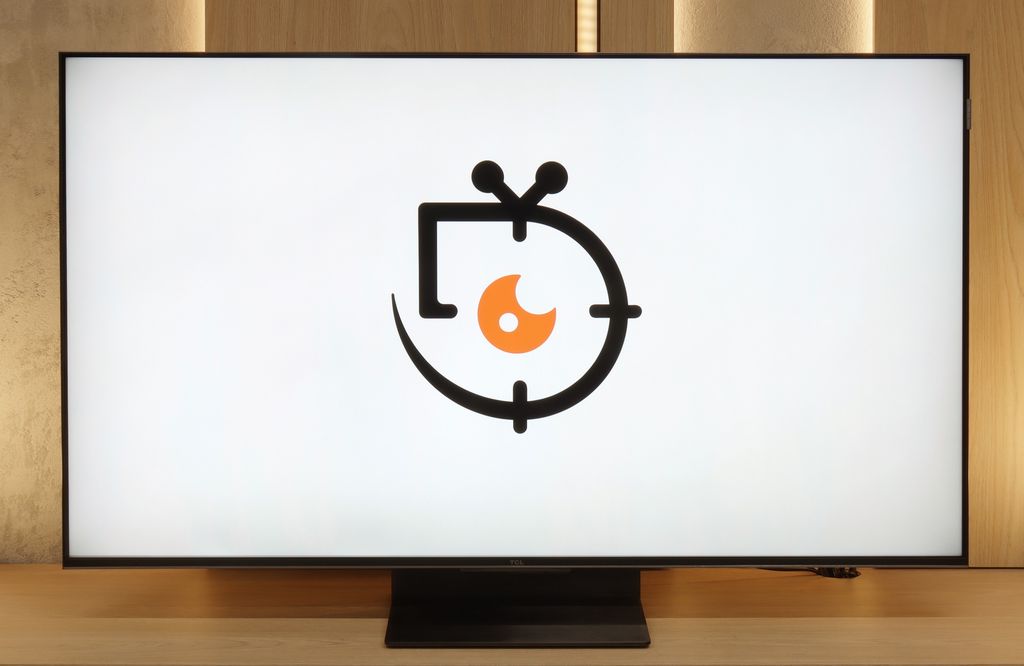
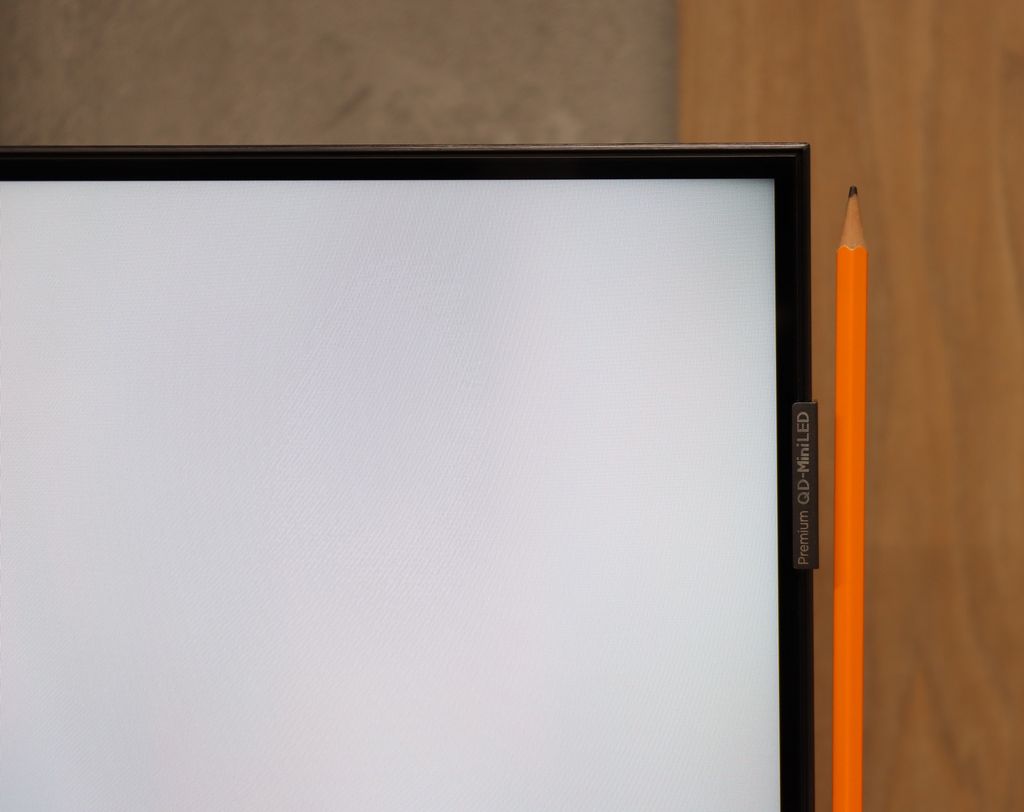
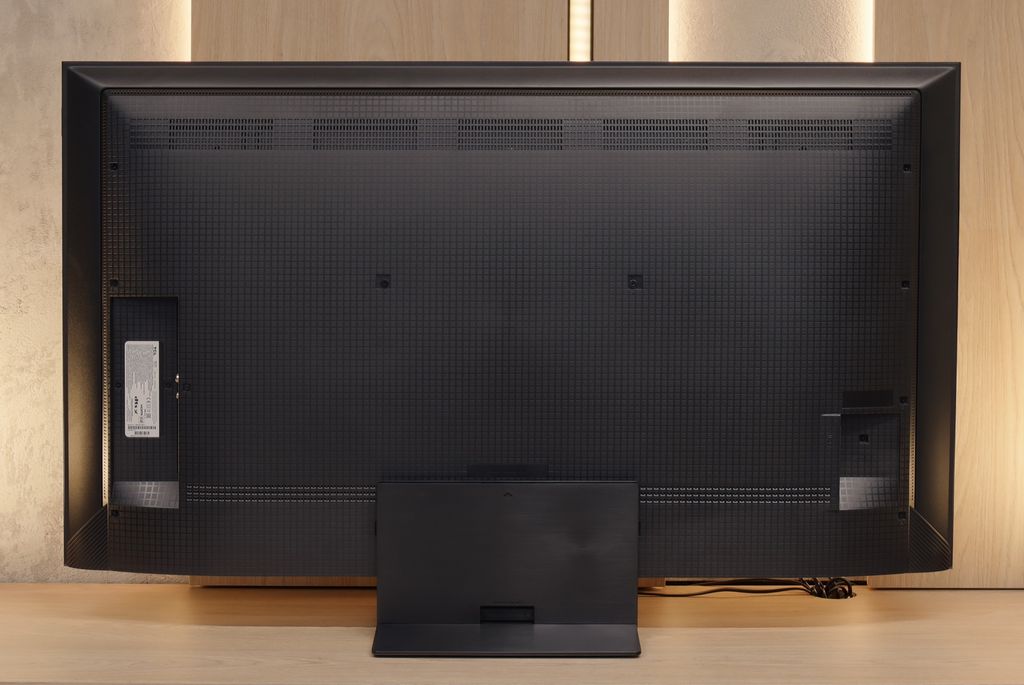
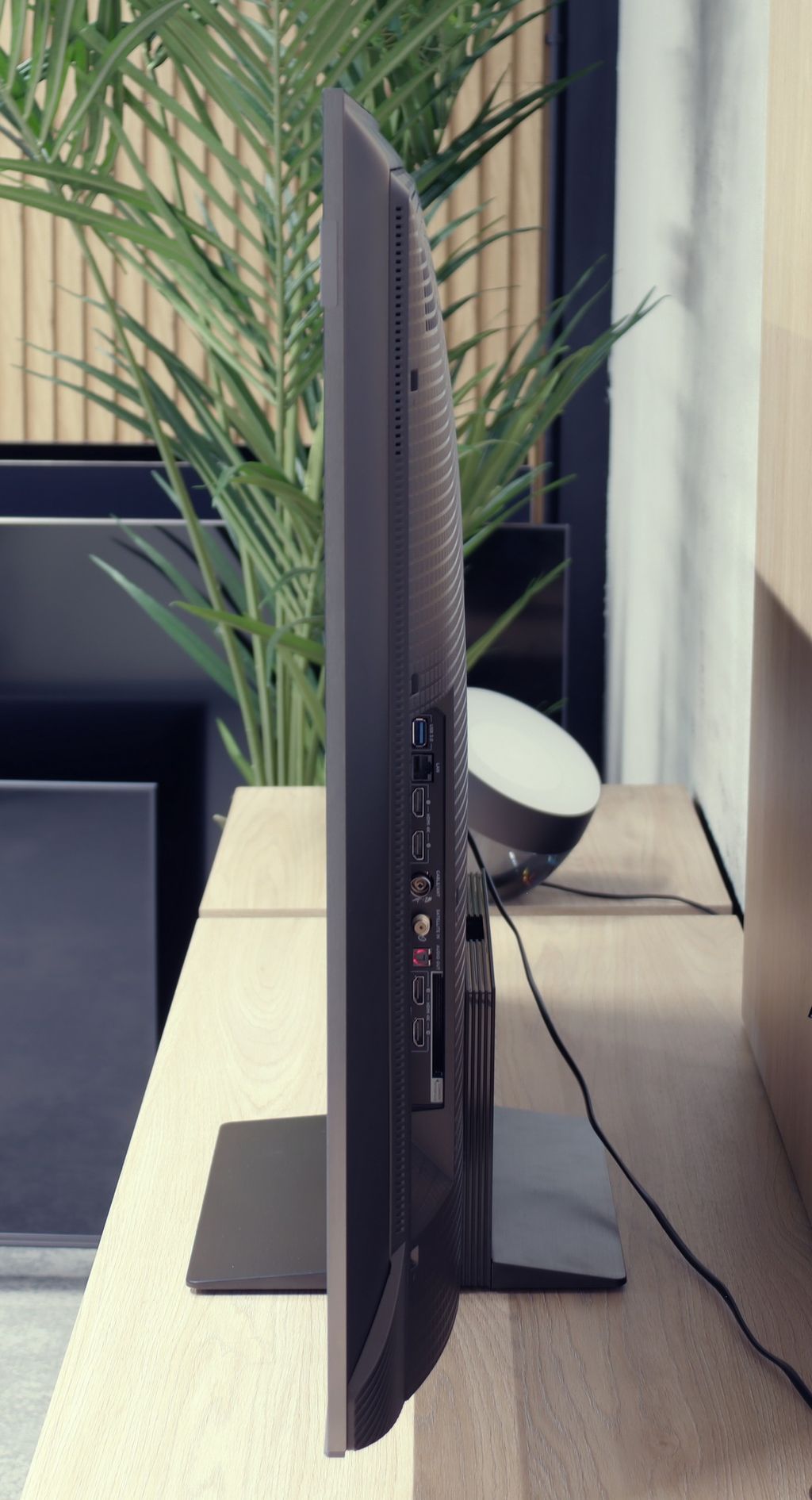
Contrast and black detail
5.8/10
7.1/10
Local dimming function: No
Local dimming function: Yes, number of zones: 336 (14 x 24)
Contrast:

Result
6,350:1

Result
5,750:1

Result
4,700:1

Result
4,950:1

Result
4,650:1

Result
161,000:1

Result
18,750:1

Result
13,150:1

Result
6,300:1

Result
4,200:1
Halo effect and black detail visibility:

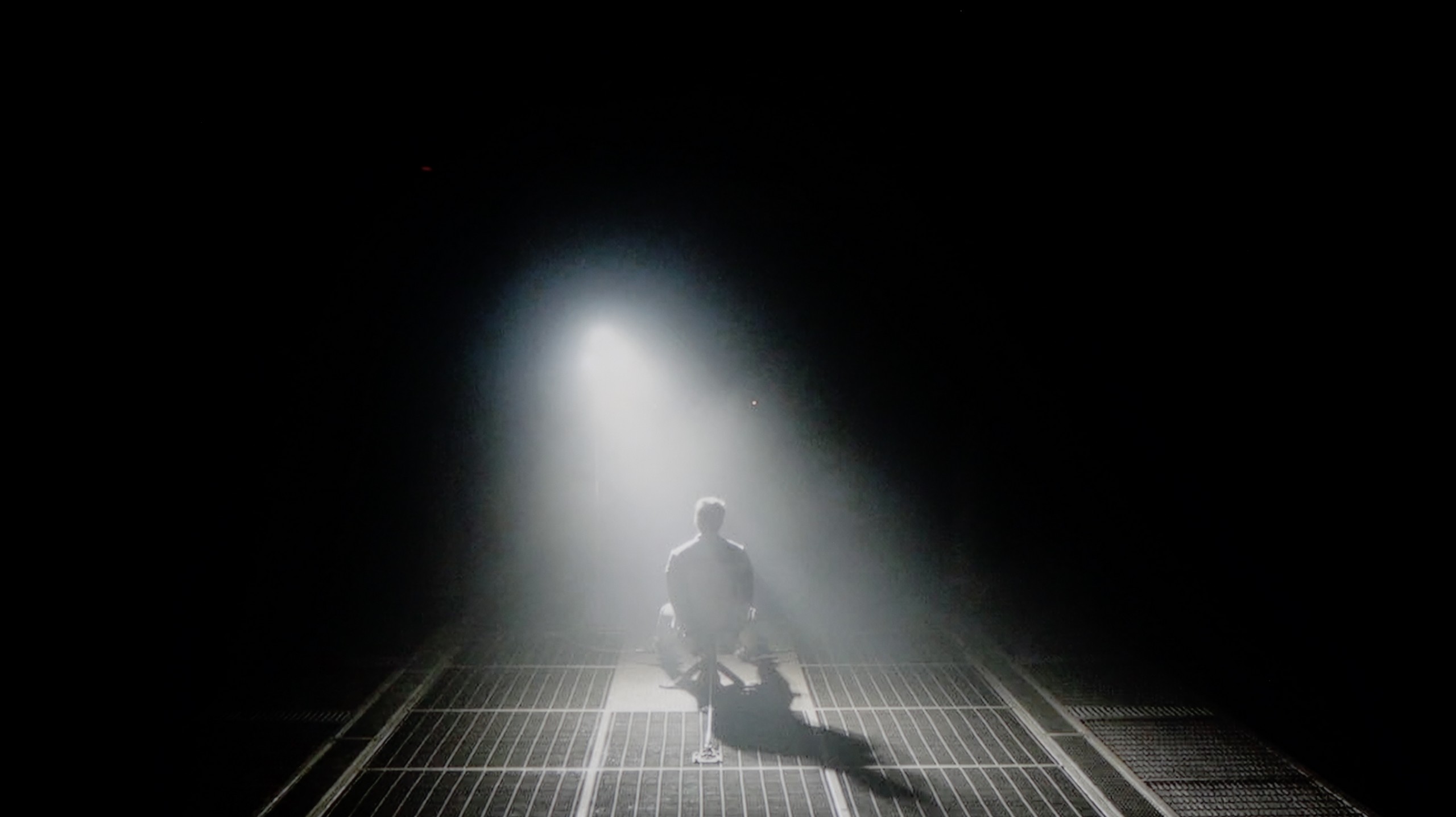
The television C69B / C655 TCL is equipped with a VA panel, which differs from IPS panels, particularly in terms of contrast and black reproduction. VA panels are characterised by significantly higher contrast, meaning better black quality, especially in night scenes or dimly lit rooms. Unlike IPS panels, where blacks often appear more like shades of grey, VA better captures deep, dark colours. Unfortunately, the C69B is not equipped with local dimming technology (common at this price point), impacting the quality of blacks in demanding scenes. During test sequences, such as a clip from the film "Sicario 2", it can be observed that instead of absolute black, some elements of the image have a navy tint. Generally, the black is acceptable, but one must consider the limitations of the television.
The 50-inch TCL C7K we tested surprised us right from the start – it's the smallest model in the series, yet it's equipped with a VA panel with MiniLED backlighting and – get this – as many as 336 dimming zones. By comparison, many far larger TVs from higher tiers would be happy to boast such a number. Here we have it in a 50-inch version. Sounds promising, right? So how does this translate into real viewing experiences? In the overwhelming majority of tested scenes – very well. The contrast was high enough that in measurements it reached even six-figure values, which in practice means very deep blacks and well-separated highlights. In scenes from films like The Revenant or Oblivion, the effect was impressive, matching the best LCD screens in this class.
Not everything, however, went perfectly. Despite the impressive number of zones, managing them wasn't always exemplary. In more complex scenes, where small light sources or a high level of detail appear, the TV had issues with the so-called halo effect (a glowing aura around bright objects) or overly aggressive dimming of the image. In such situations, contrast could either collapse due to overexposure of some zones or, conversely – details in bright areas vanished because the zones were suppressing light too much. Nevertheless, it's worth emphasising that in the vast majority of scenes the contrast was more than satisfactory. And considering the size of the TV and the price, the final effect will satisfy not only average users.
HDR effect quality
4.8/10
5.4/10
Luminance measurements in HDR:

Result
283 nit

Result
322 nit

Result
346 nit

Result
322 nit

Result
355 nit

Result
1051 nit

Result
185 nit

Result
454 nit

Result
200 nit

Result
836 nit
Scene from the movie “Pan” (about 2800 nits)


Scene from the movie “Billy Lynn” (about 1100 nits)

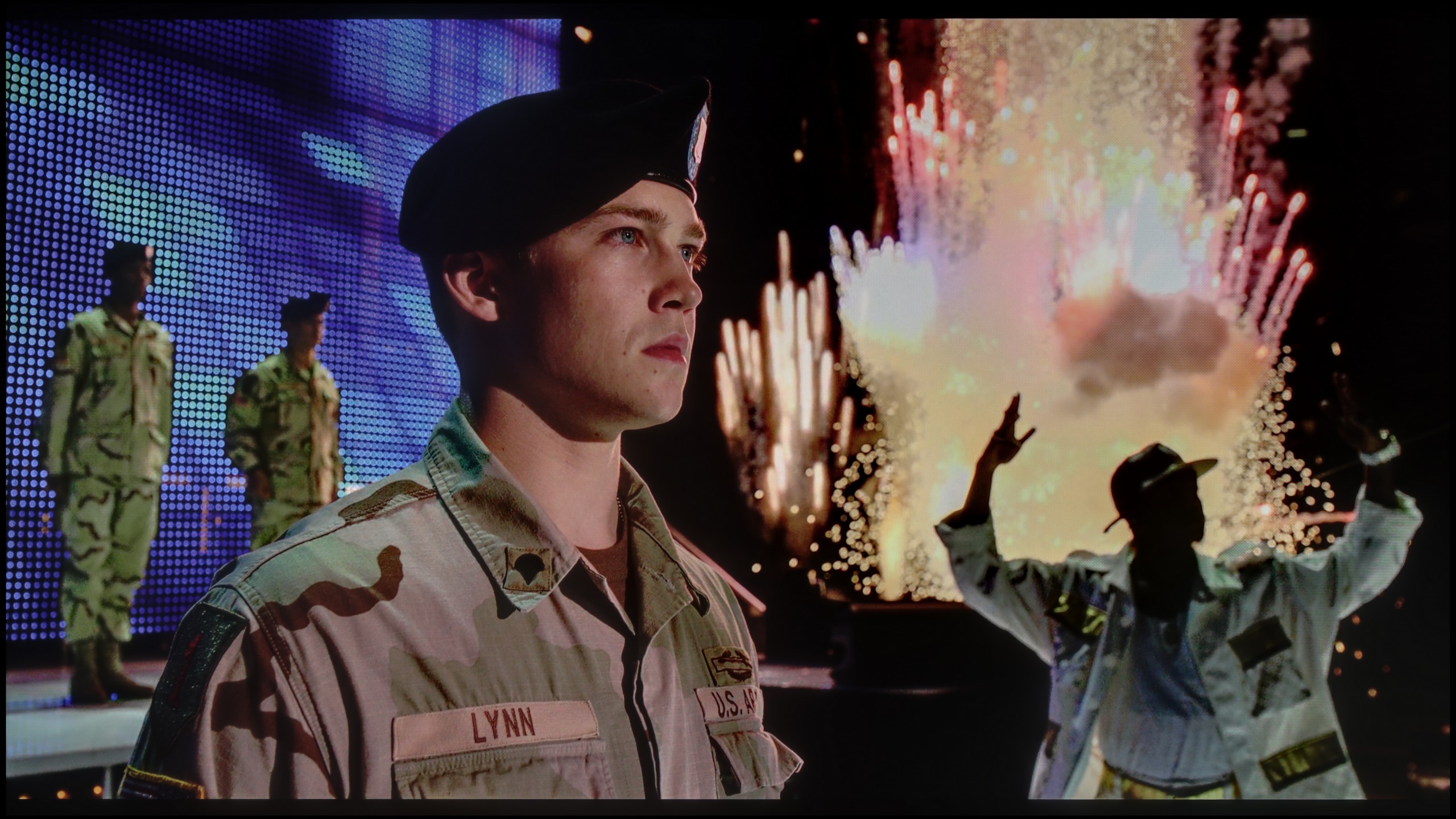
Static HDR10


Dynamic: Dolby Vision
Dynamic: Dolby Vision


HDR luminance chart:
TCL C7K / QM7K
HDR luminance
TCL C655 / C69B (43" - 50")
HDR luminance
The quality of the HDR effect on the TCL C69B / C655 television is quite average. A brightness level of 350 nits, while not the worst, still does not allow for a full enjoyment of the HDR effects that require higher luminance to showcase their power. Additionally, the television, despite using a quantum dot coating (QLED), offers average coverage of the wide DCI-P3 colour gamut at 91%, which may limit its colour richness in HDR content.
TCL C7K is one of the brightest MiniLED TVs in its price class. Under optimal testing conditions, the screen can achieve over 1200 nits, resulting in impressive, at times dazzlingly bright scenes. And most importantly – this isn’t just a theory from measurements. In practice, even the brightest moments in movies can shine with true cinematic grandeur. Home HDR cinema fans should be really pleased.
The impression is fantastic, especially in scenes with large areas of brightness – a white sky, explosions, sun reflections, or magical sunsets can surprise with an intensity of light that rarely appears in this price range.
However, things get a bit worse when more challenging scenarios appear on the screen, previously described in terms of contrast – that is, images full of details, with small bright elements on a dark background. In such cases, the C7K often opts to preserve black at the expense of brightness. An example? Scenes from movies like Sicario 2 or Life of Pi, where small light sources (like a distant lantern) may become less visible, and details in the lights are simply dimmed or blend into the background.
For many viewers, this may be an acceptable compromise – as we achieve deep blacks and pleasant image depth. Nevertheless, it’s important to recognise that the visibility of small details in bright areas is not this model's strong suit. It’s simply a technological limitation that still exists – even with over 300 zones.
Factory color reproduction
6/10
6/10


Factory Mode
After calibration
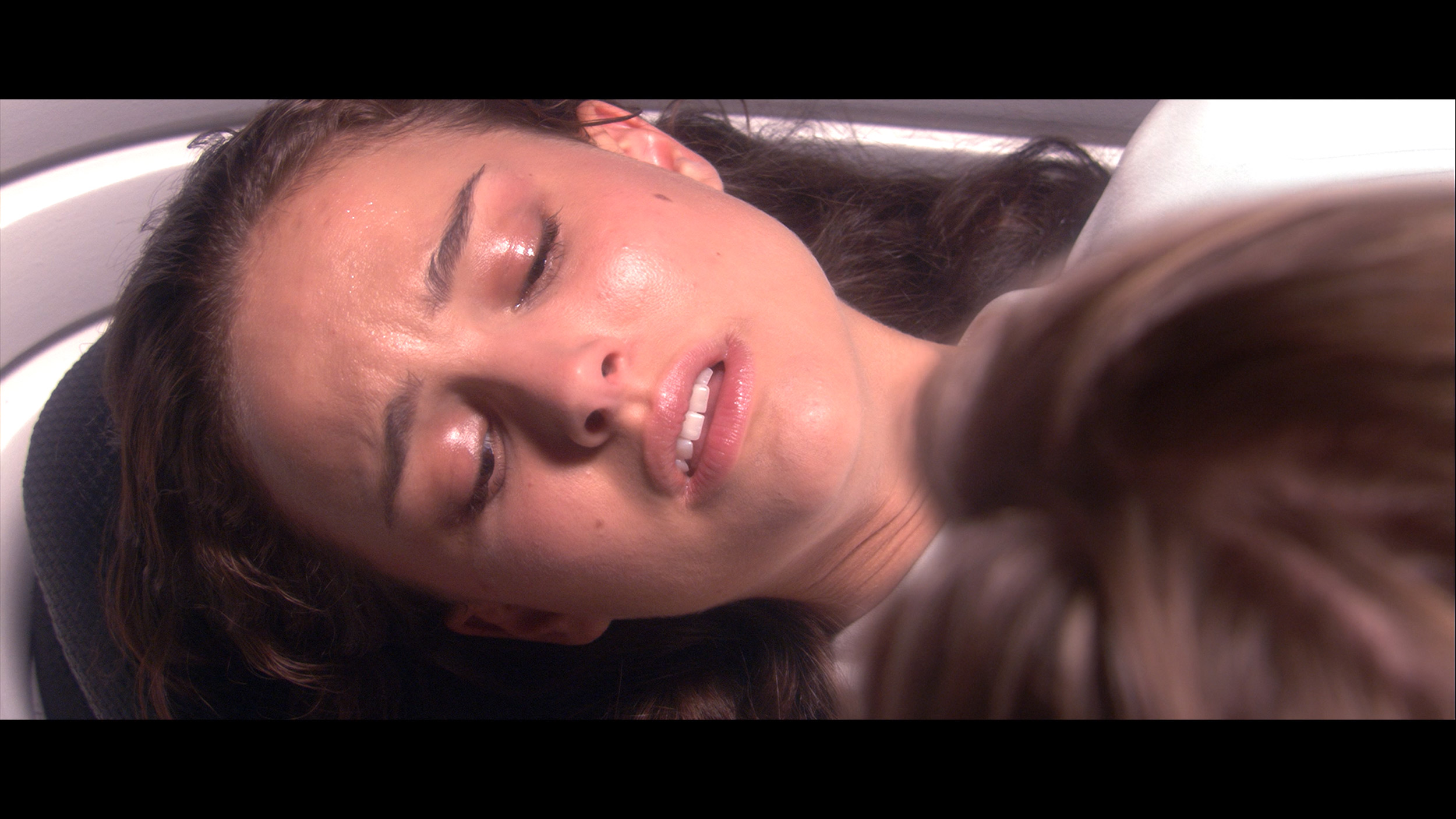
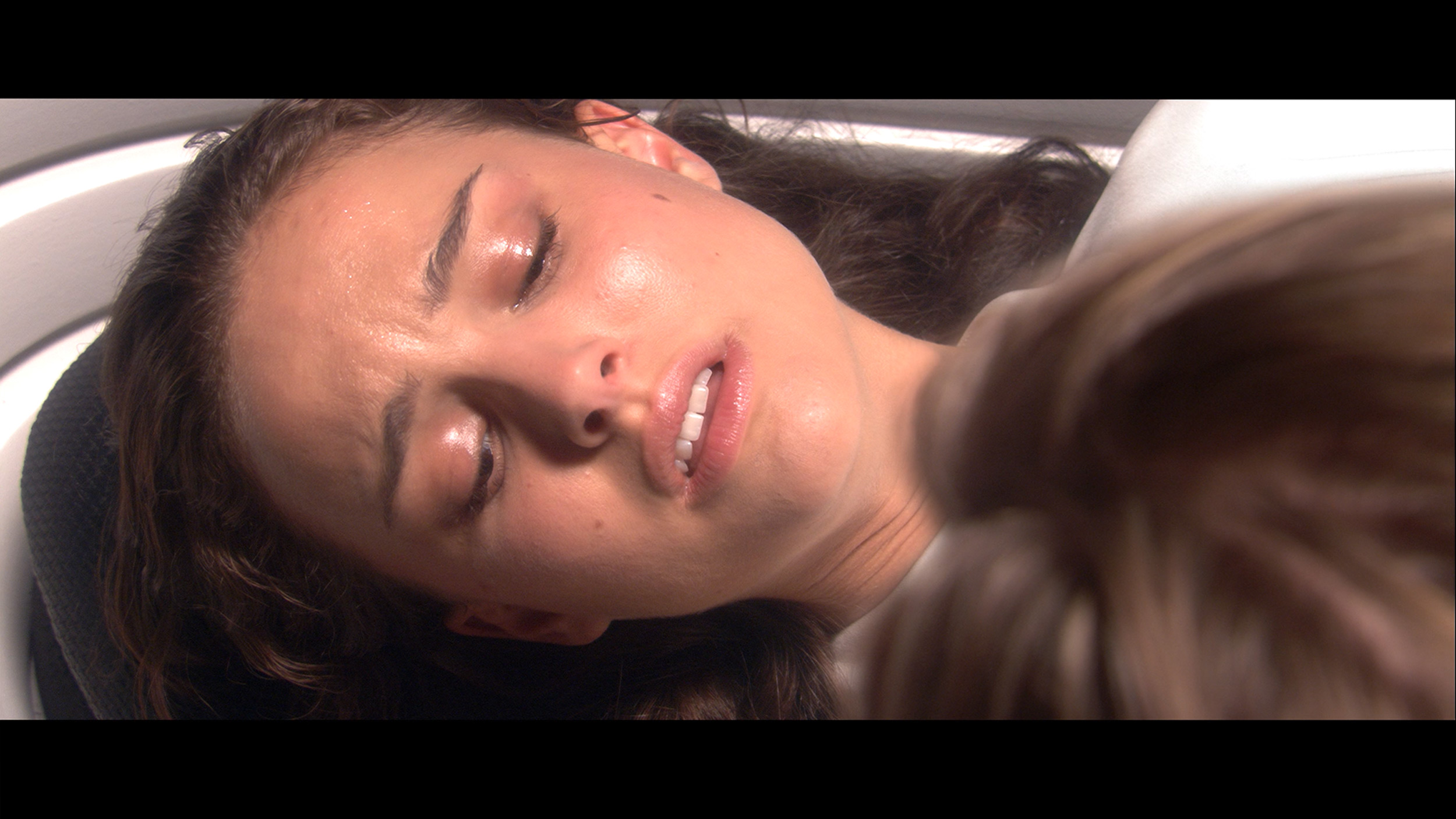
Factory Mode
After calibration
Tested in film mode, the television TCL C69B / C655 unfortunately does not meet expectations regarding colour accuracy. Although the film mode suggests better representation, it has as much in common with film as nothing at all. There are numerous errors, particularly in the white balance – for both HD and 4K HDR content – where the dominance of blue is very apparent. For the viewer, this means that the image becomes unnaturally cool, affecting the overall perception of colours and the visual impression. The colour checker confirms these errors, showing that colours shift towards cooler shades.
When it comes to brightness characteristics and related contrast, gamma is very unstable for the material, making the image potentially slightly darker. The EOTF curve for the 4K material shows some errors, with significant deviations towards the end of the graph, which negatively affects the perception of darker parts of the image.
A new feature in TCL televisions for 2025 is the long-awaited Filmmaker mode, which until now has been found in most competing brands. This is great news, as this mode is considered the most faithful to the original vision of the creators and is often recommended by enthusiasts of quality visuals. Unfortunately – as is often the case – the mere presence of it does not guarantee perfection. The Filmmaker mode in the TCL C7K is not without its faults. There are issues with inaccurate white balance, particularly a slight blue tint that resulted in cool, somewhat greyish skin tones. But that wasn’t the biggest problem. The main complaint was excessive brightness exposure, which is clearly visible on gamma and EOTF charts. The image was simply too bright, at times even blown out, which affected not only the texture of scenes but also the overall viewing experience. Some details were just lost, and the entire image looked as if someone had overdone the brightness slider. As always, we decided to see what could be squeezed out of it after calibration. And this is where things started to get really interesting…
Color reproduction after calibration
8/10
7.5/10

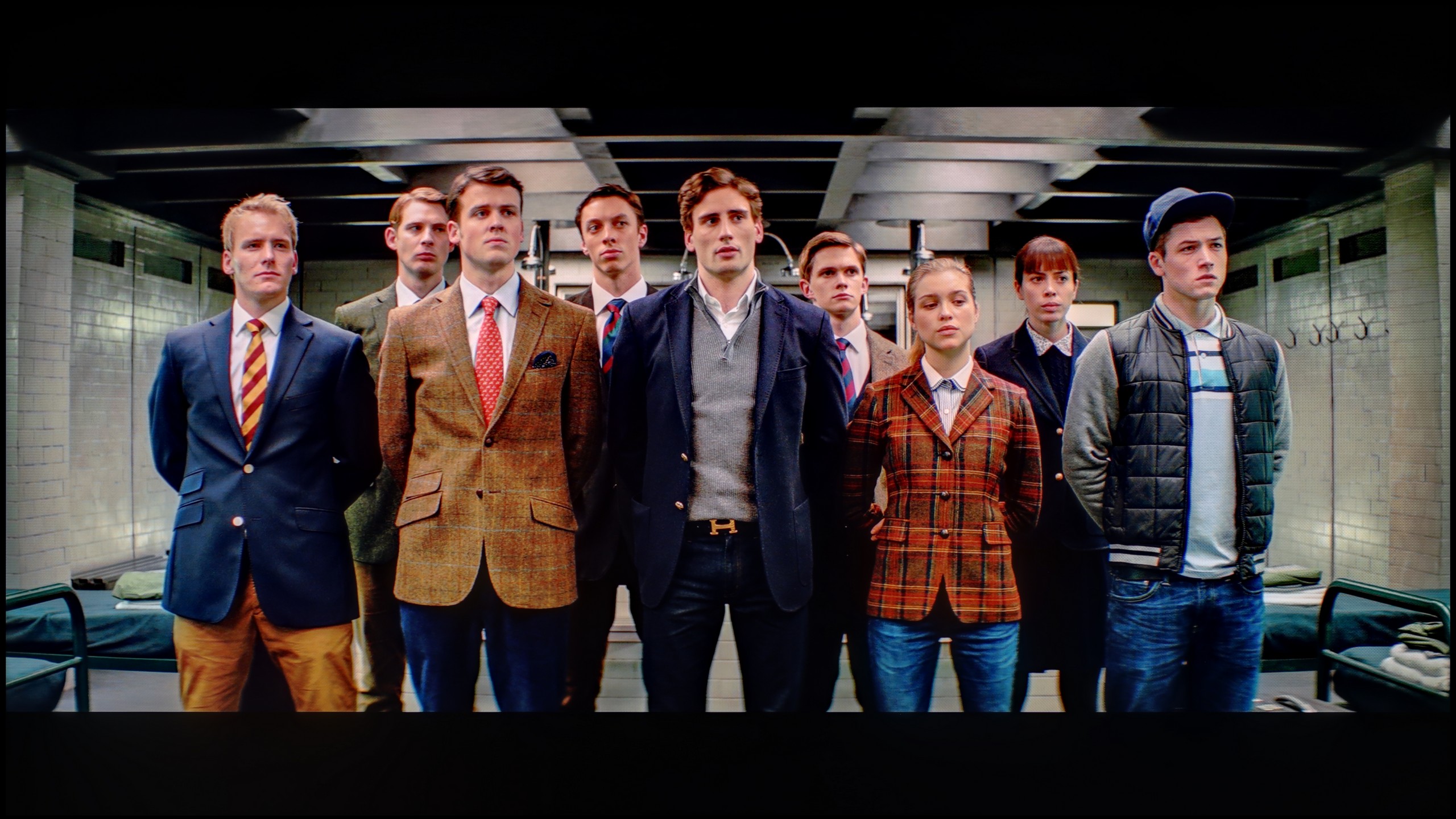

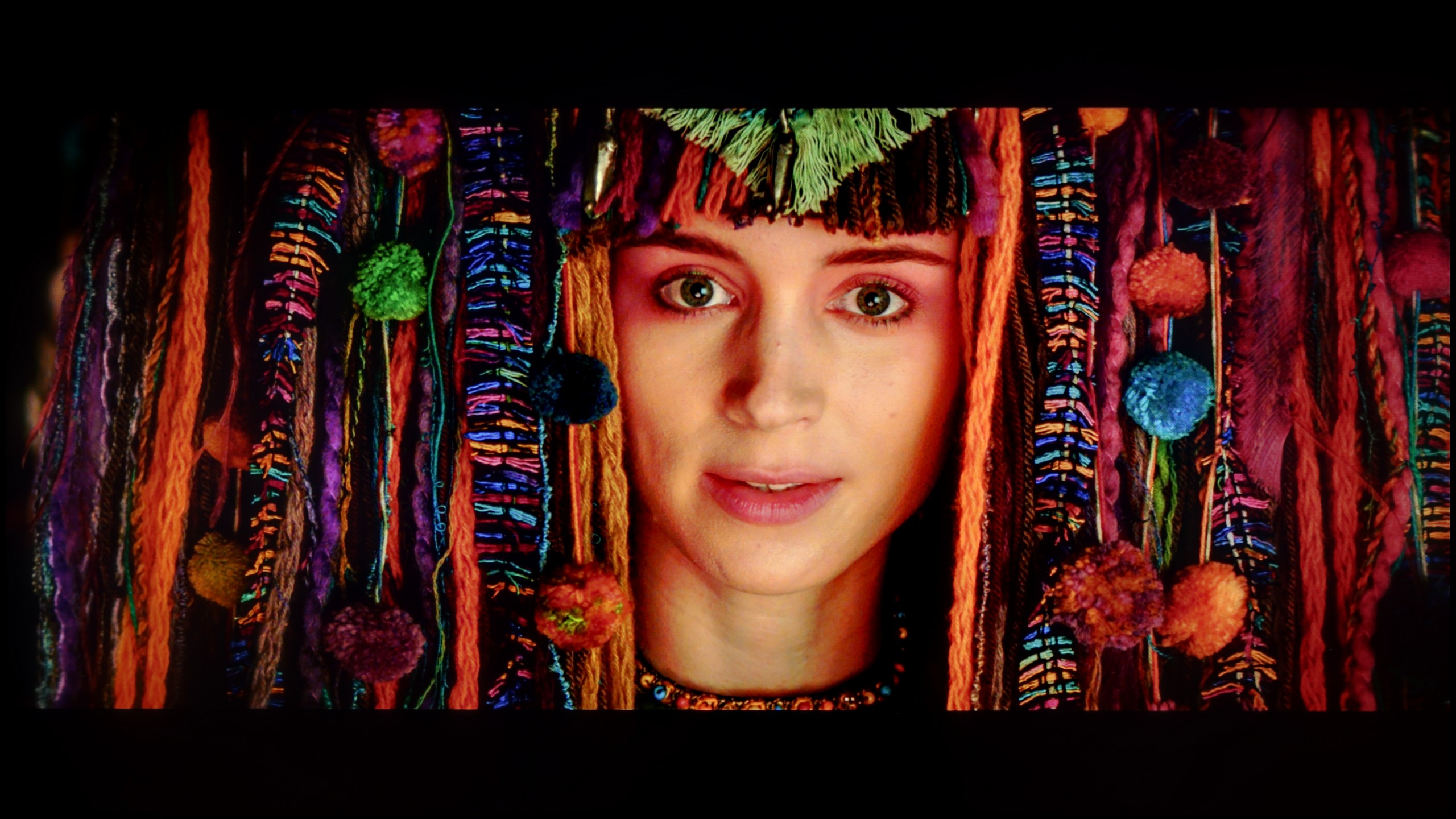
After calibration, the movie mode on the TCL C69B / C655 television improves in quality. The most significant enhancement can be seen in tonal reproduction, and the white balance presents itself much better – without major errors. We will no longer see the excessive dominance of cool shades. The gamma has also been improved, resulting in a more stable representation of brightness and contrast. However, due to limitations in the average colour palette of the television, Colour Checker tests for 4K materials did not achieve outstanding results. Despite these technological limitations, the image became more authentic, positively impacting the reception of film content.
After calibration, the TCL C7K showed itself in a really good light, especially when it comes to SDR content. We managed to precisely tune the white balance, colour gamut, and brightness characteristics so that the colour errors on the ColorChecker palette fell below a value of 2. For the uninitiated – this is nearly a perfect result, which means that the image is very close to what the creators intended. Unfortunately, it was a different story with 4K HDR content. While we were able to slightly calm down the white balance and correct its earlier errors, it was still evident that the TV has some "MiniLED traits", particularly in brightness management. When we checked how the C7K handled the EOTF curve on real film scenes, rather than just on synthetic test patterns, it turned out that the screen still had a tendency to slightly brighten the entire image. This affects the overall experience – the black loses some depth, and the image becomes less contrasty than it should be. Despite these minor issues with HDR content, the overall reception of materials – especially in SDR – is really very good. After calibration, the C7K can display an image that can successfully compete with much more expensive models. Good colour tuning, natural skin tones, and pleasant brightness make movie watching and everyday content viewing more than satisfactory.
Smoothness of tonal transitions
4.5/10
8.6/10

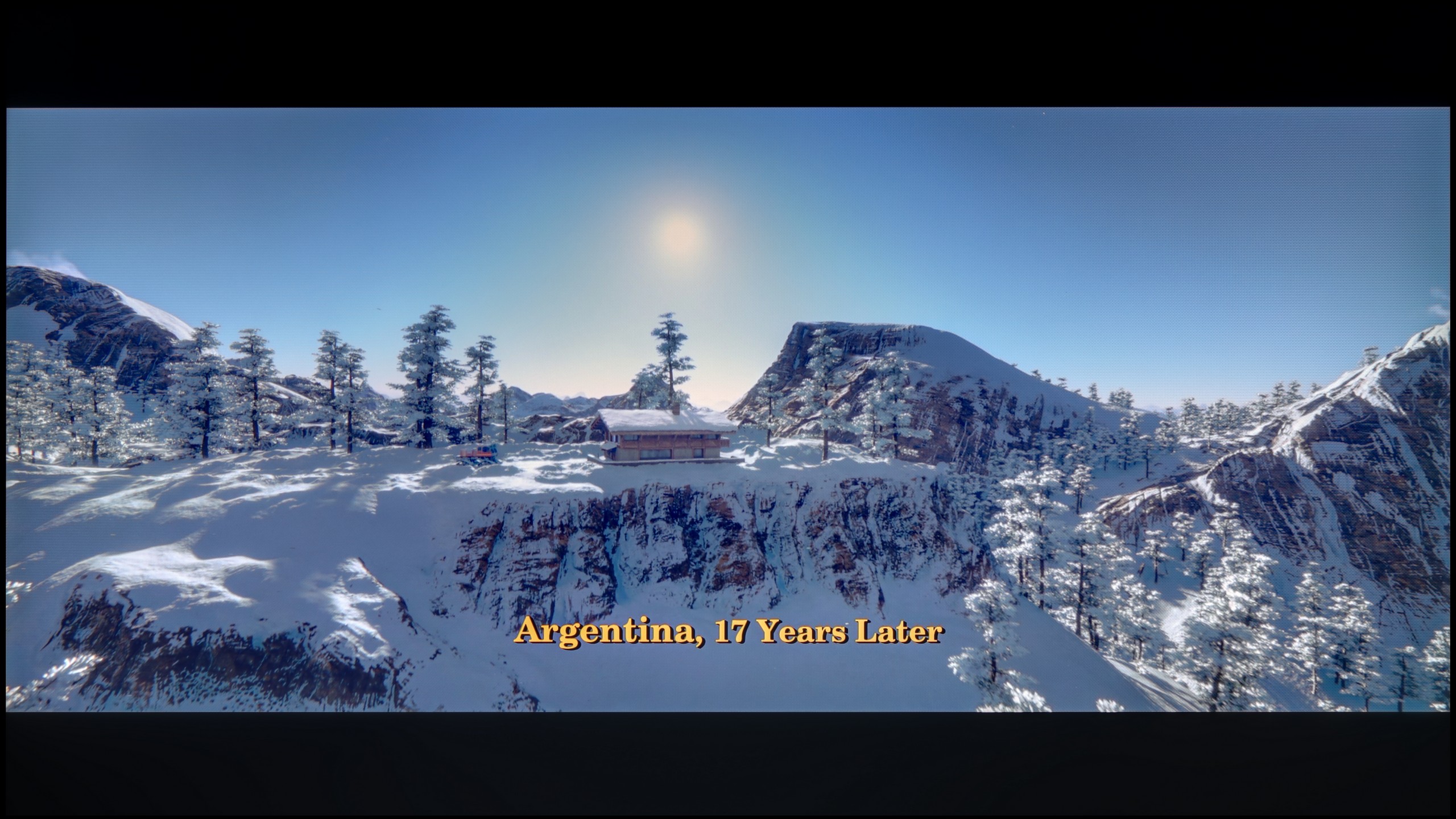



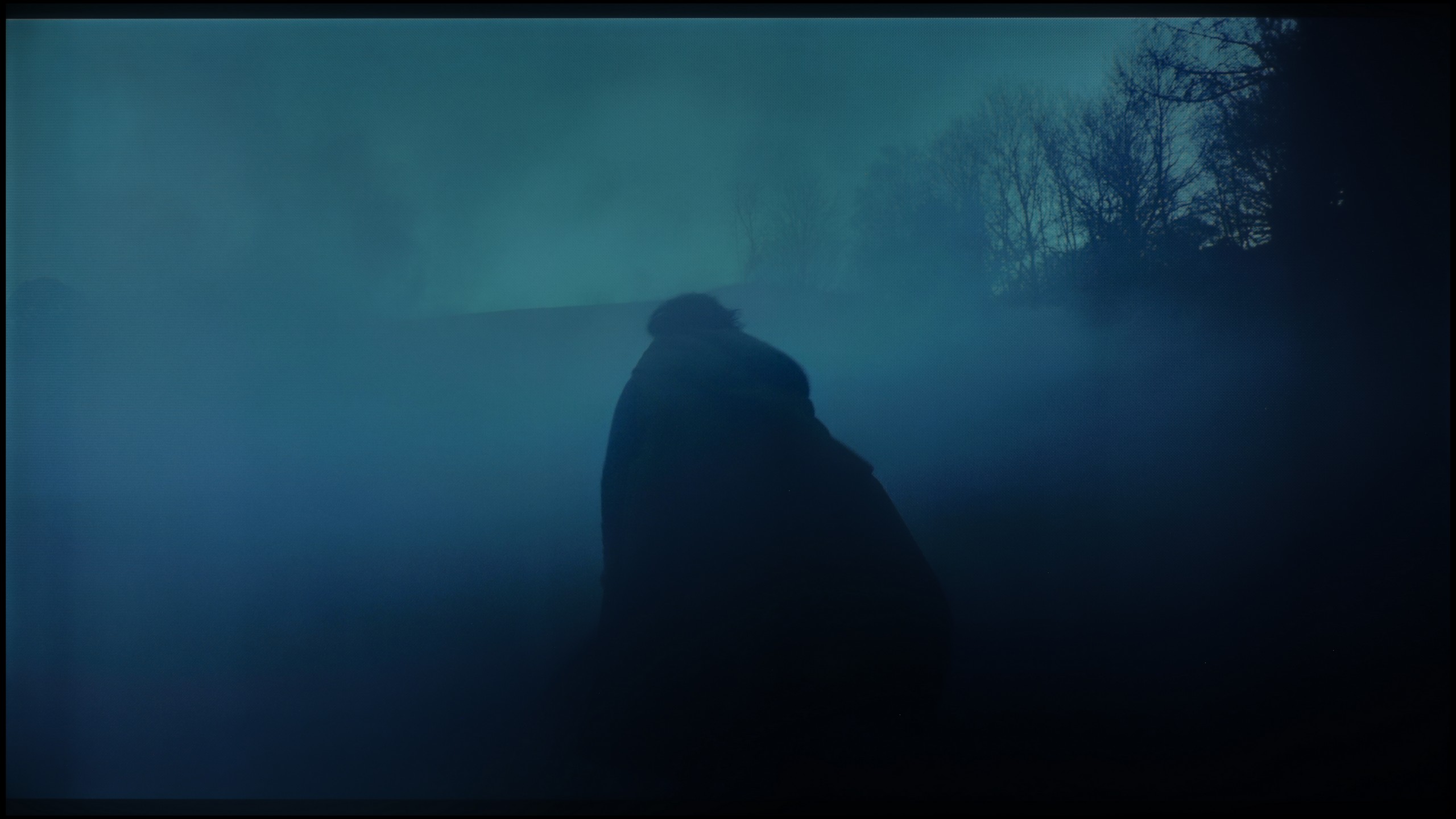






Tonal transitions are really quite good and would deserve a rating of 9, however the score has been clearly lowered for another reason - the image is artificially sharpened despite the "sharpness" setting being on 0. And the overall view is unpleasant.
The TCL C7K performs very well with colour gradation – in most of the scenes tested, tonal transitions were smooth, and colours blended together without visible outlines or the artificial effect of "blotches". In everyday use, it's hard to find any faults – the picture looks natural, without jarring transitions or digital artifacts. Certain limitations only appear in very dark tones – especially in a heavily muted grey palette, where the television may struggle to reproduce the ideal gradation. But that’s absolutely understandable, as even many significantly more expensive models in this range simply can't cope. Fortunately, these situations are rare and don’t really affect the overall perception.
Image scaling and smoothness of tonal transitions
5/10
5.5/10
Smooth transition function

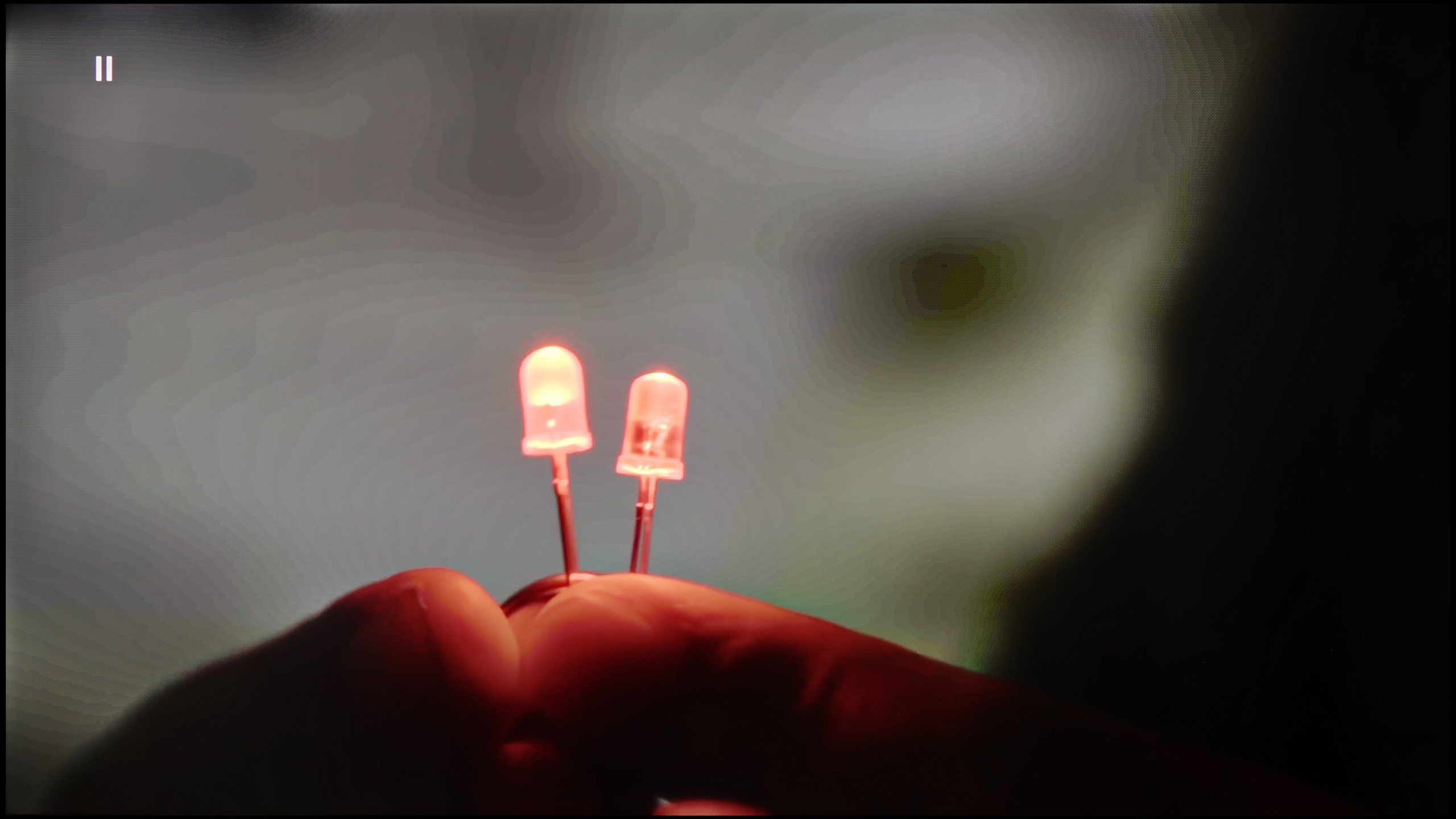
Image without overscan on the SD signal


The "Gradual Smoothing" feature works very well on the TCL C69B TV and, surprisingly, does not remove desirable effects like film grain – unlike some solutions from other manufacturers. Unfortunately, when it comes to image scaling, it looks poor. The TV artificially sharpens the image, causing the edges of objects to appear quite jagged. This situation may appeal to some users who prefer a more "hard" look to the image, but it is not an ideal solution for those who value naturalness and fluidity of details.
TCL C7K has a feature that, according to the manufacturer, is meant to smooth out undesirable colour transitions – something like a rescue for less successful tonal shifts. It's called "Gradual Smoothing," and... well, it sounds ambitious, but in practice, it works very poorly. Regardless of whether we set it to low or high, the difference is minimal. Worse still – the feature can cut out elements from the image that should remain. Fortunately, film grain remains untouched, so at least it doesn't smooth everything indiscriminately, but even so – it's better to simply turn this option off.
When it comes to upscaling lower resolution content, it's already better. SD and HD materials look quite decent, although at times we had the impression that the image loses sharpness and becomes too soft – as if something took away its clarity. Fortunately, with very low sources (e.g., 576p), there was no overscan effect, meaning the image wasn't artificially cropped – everything fit on the screen as it should.
Blur and motion smoothness
4.4/10
8.1/10

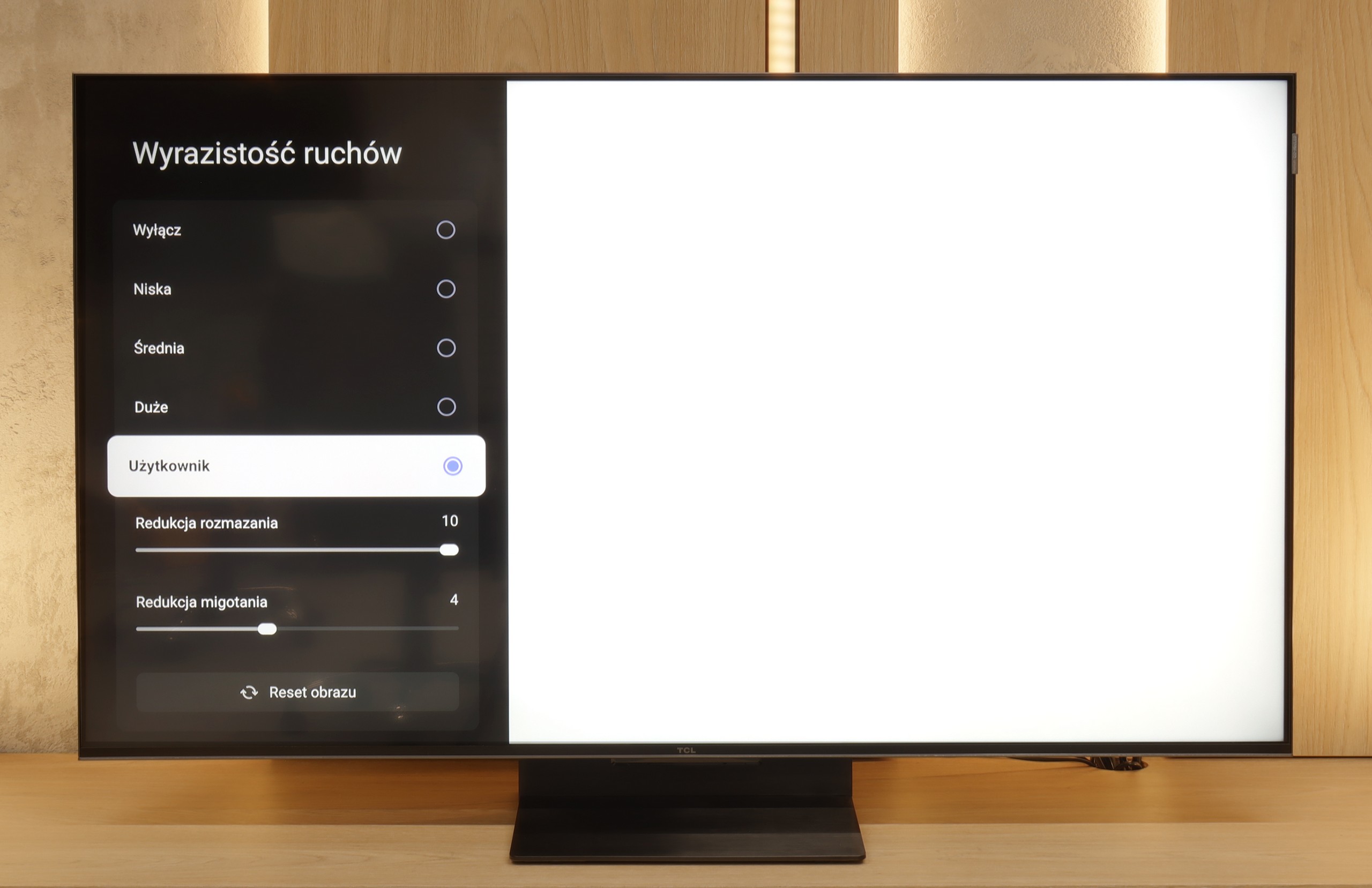
Blur (native resolution, maximum refresh rate):




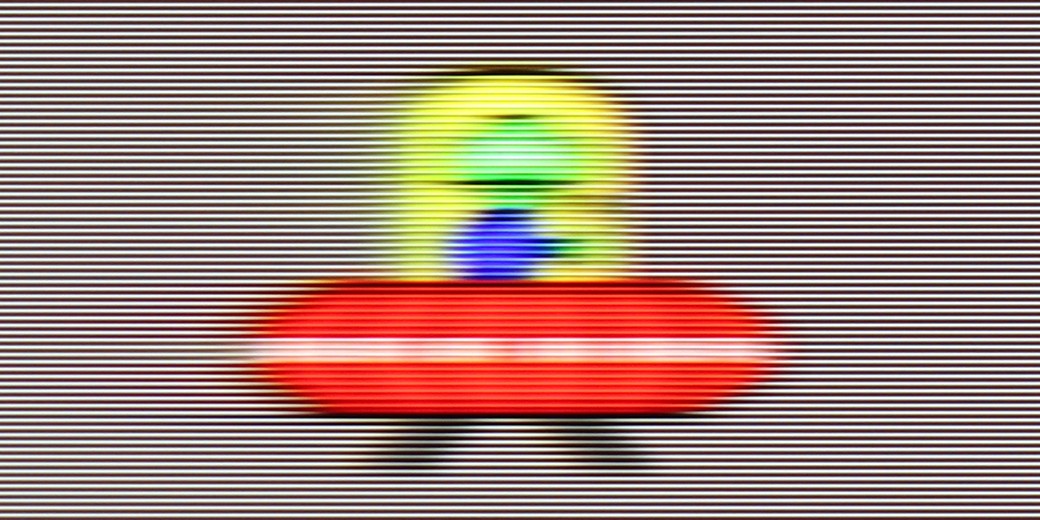
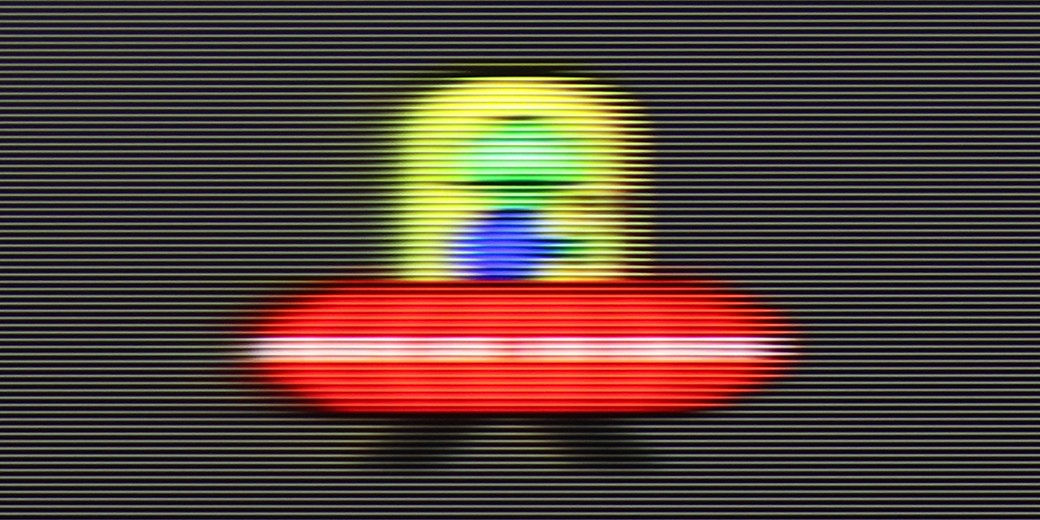
Blur (BFI function enabled):



Smużenie ():
Smużenie (4K 144Hz):



Television TCL C69B / C655 in its smallest variants offers decent, though not perfect, results in terms of motion smoothness. For movies, the television features a "Flicker Reduction" function, which allows for adjustment of motion smoothness on a scale from 1 to 10. Thanks to this option, we can tailor the image appearance to either a cinematic or more theatrical preference (with less or greater speed).
TCL C7K handles motion fluidity really well. The panel it uses offers a refresh rate of 144 Hz, which suggests that this TV is more than just a standard "60 Hz" panel. Furthermore, if we connect the C7K to a computer and set the resolution to Full HD. But we will write more about this in the paragraph on gamers and PC compatibility. Returning to everyday use – both sports and movies look very good here. Thanks to the fast panel and the well-functioning motion smoother, the C7K is great for watching matches, but also for movie screenings. In the menu, we find two sliders – motion blur reduction and flicker reduction – that allow you to adjust the fluidity effect to your own preferences. At lower settings, we get a more cinematic effect, with slight judder. At higher settings – the image becomes more theatrical, fluid to the point of excess. Whatever your preference – everyone can set it their own way.
Console compatibility and gaming features
5.3/10
9.8/10
- ALLM
- VRR
- VRR range48 - 60Hz48 - 144Hz
- Dolby Vision Game Mode
- Correct implementation of HGIG
- 1080p@120Hz
- 1440p@120Hz
- 4K@120Hz
- Game bar

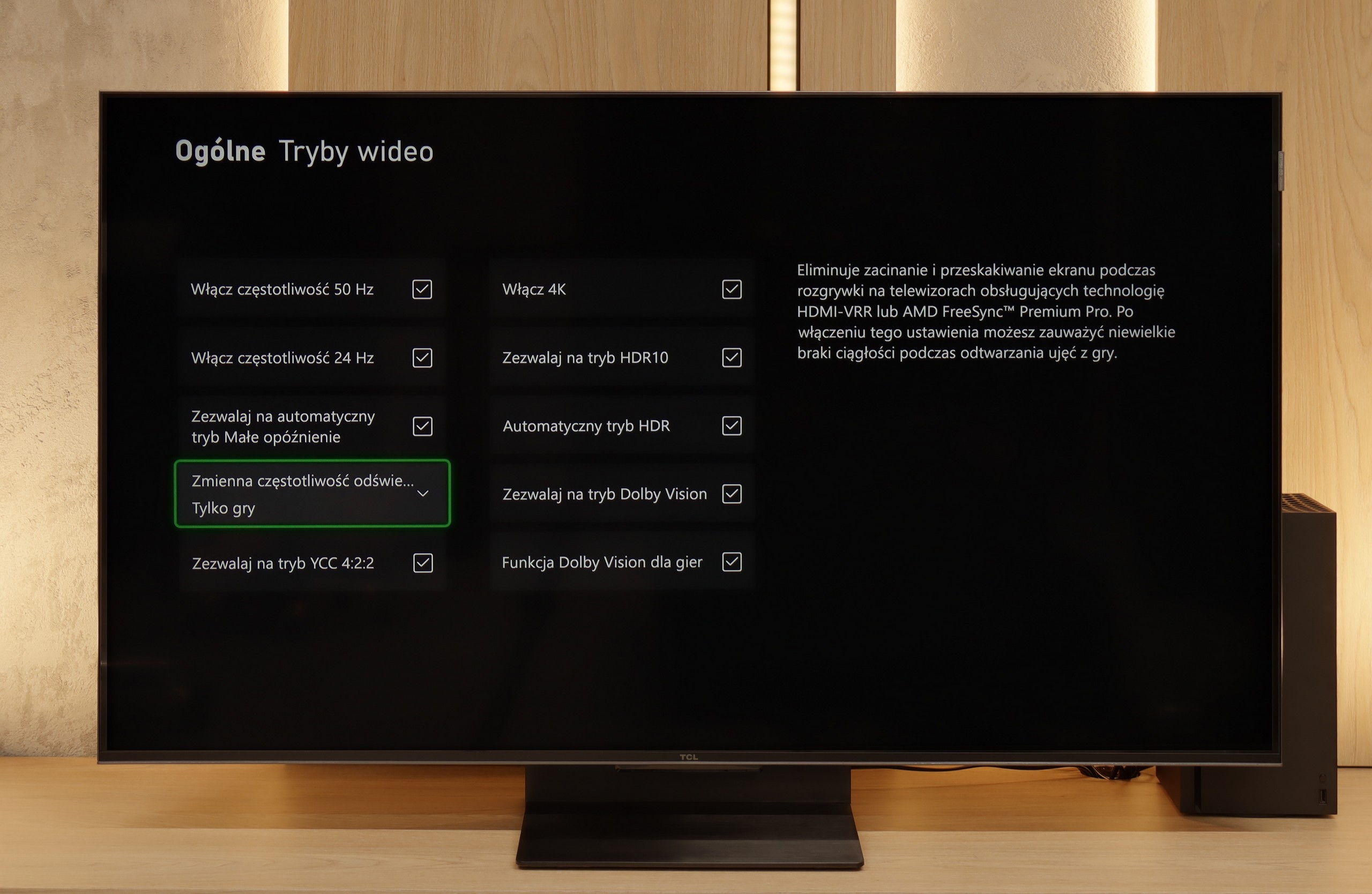

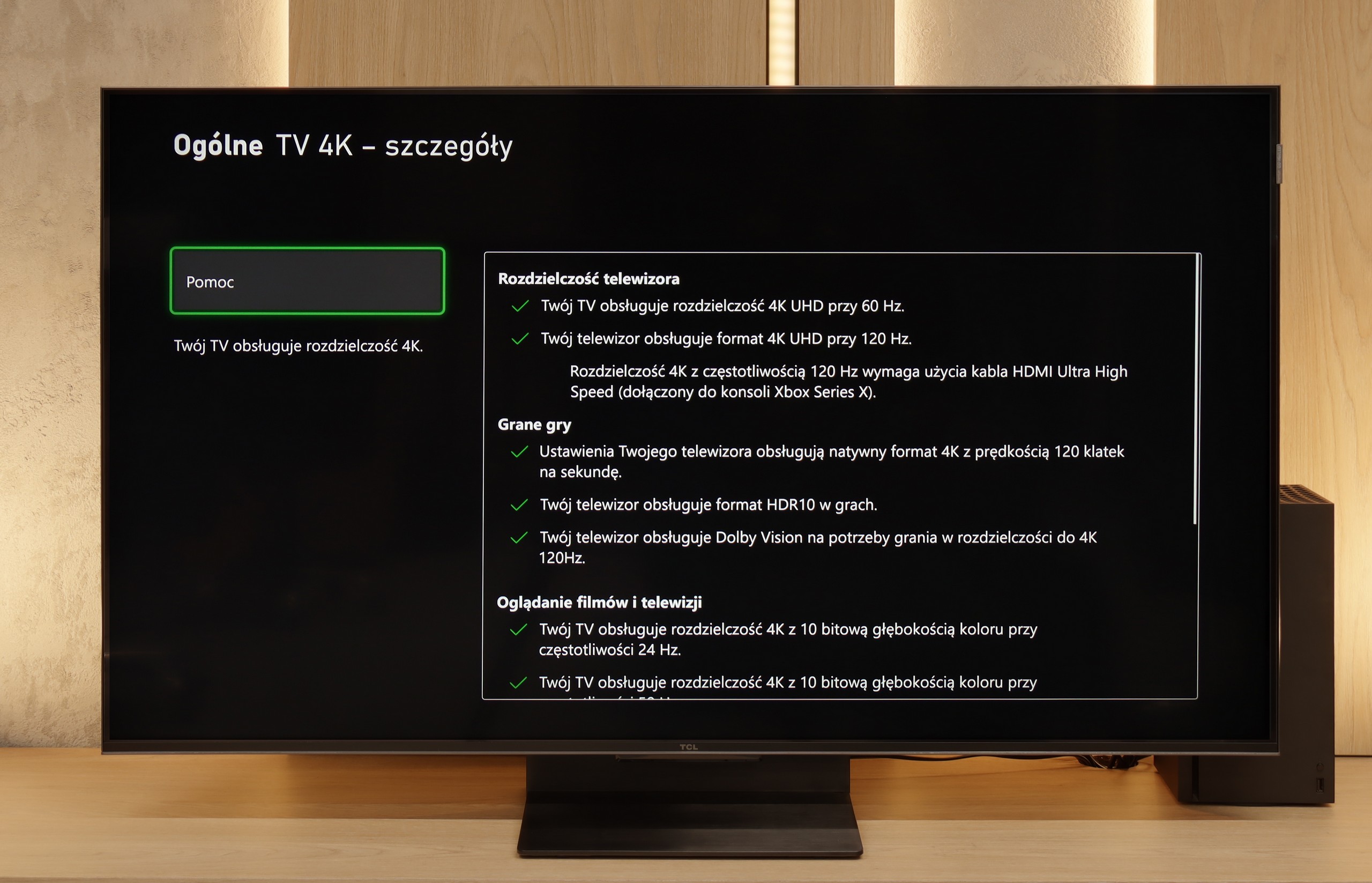

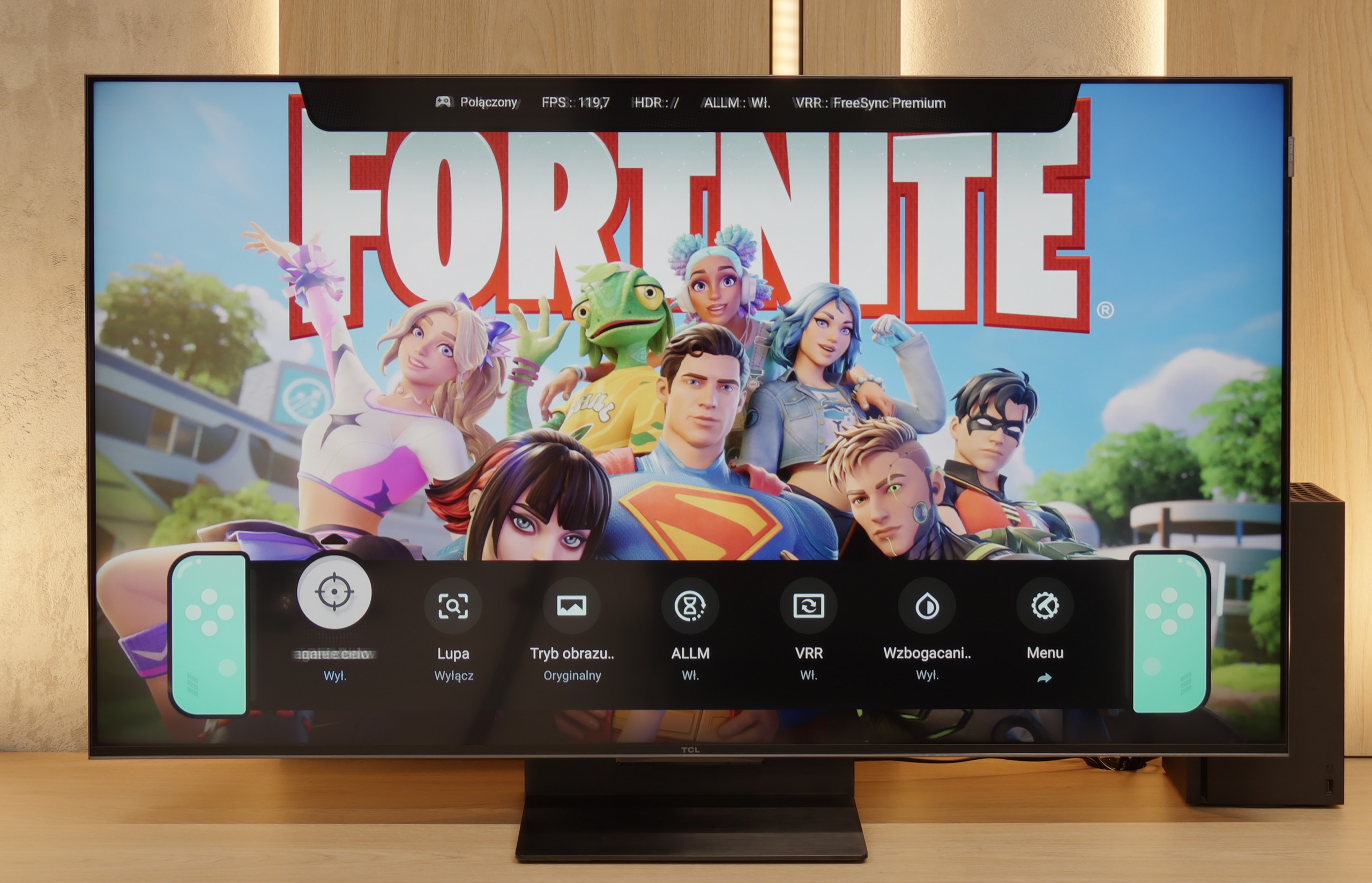

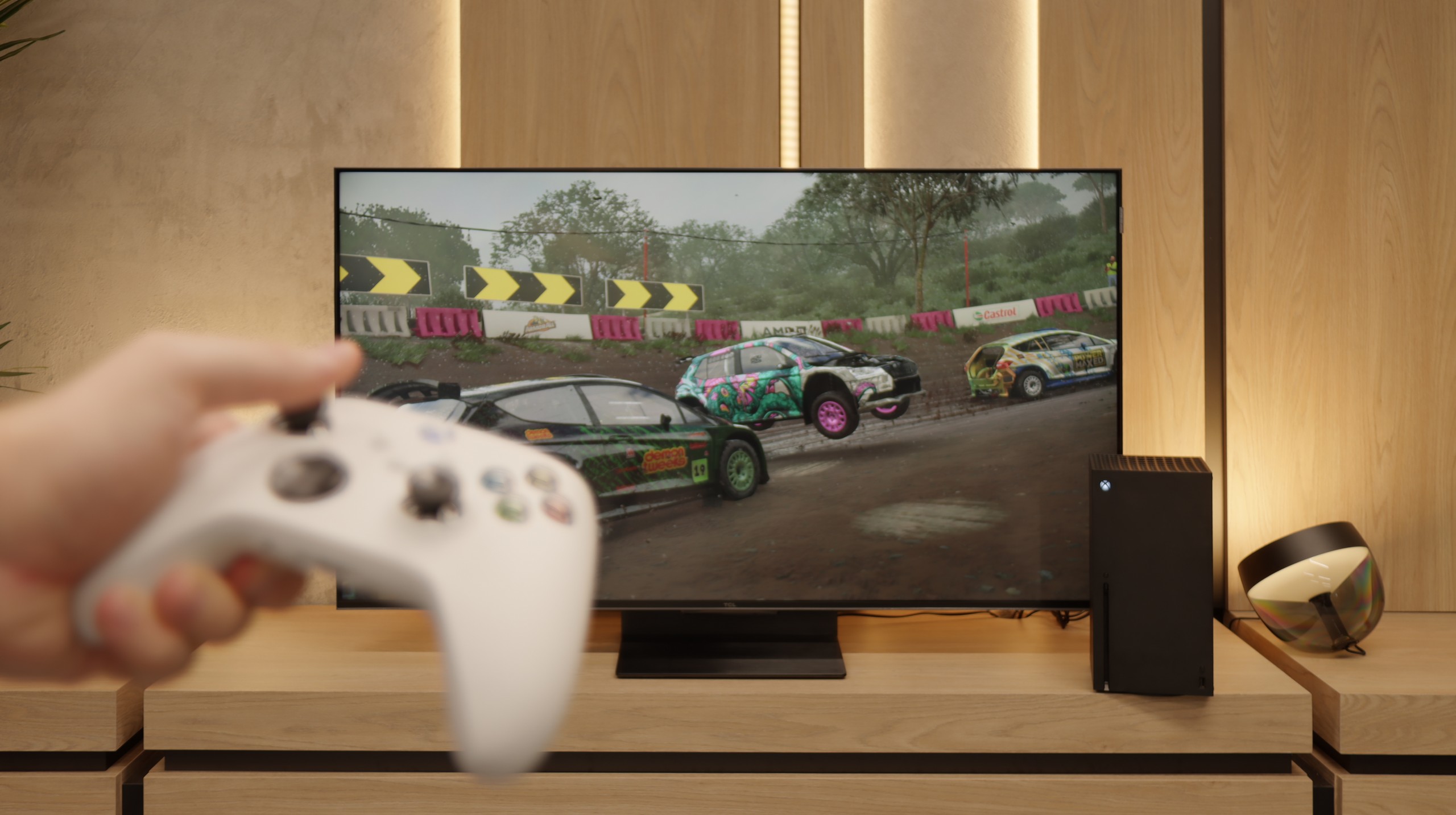
The TCL C69B / C655 TV in its smallest variants offers a range of features dedicated to gamers, such as ALLM (Automatic Low Latency Mode), VRR (Variable Refresh Rate), Dolby Vision for gamers, and Game Bar. ALLM automatically switches the TV to low latency mode, improving responsiveness and minimising delays in control. VRR allows for synchronising the screen refresh rate with the frame rate generated by the console, eliminating screen tearing and providing smoother gameplay. Dolby Vision for gamers ensures better colour and contrast representation in games that support this format, resulting in better image quality. Meanwhile, the Game Bar provides quick access to game settings and monitors key parameters such as input lag.
However, the TV has certain limitations that may affect gaming comfort. The 60 Hz panel does not allow for displaying signals with a higher refresh rate, which can impact image smoothness in dynamic games. The lack of support for G-Sync technology for PCs can also be noticeable when gaming on a computer, especially in demanding, fast-paced titles.
TCL C7K is a television that on paper looks like the perfect equipment for gamers – and most importantly, it performs well in practice too. Here's some good news: we have two full-bandwidth HDMI 2.1 ports, so we can easily connect both a console and a computer, using all their capabilities. The panel itself supports a refresh rate of 144 Hz, which provides a significant advantage in dynamic games. Additionally, it comes with a full set of gaming features: VRR (variable refresh rate), ALLM (automatic low latency mode), and support for Dolby Vision in games. There's also an HGiG mode that allows for HDR effects that align with the creators' intentions. GameBar, which is an information bar for gamers. It operates quickly, looks clear (like a Nintendo console👌), and shows what's most important: the current frame rate, VRR status, and even HDR parameters.
Input lag
10/10
9.7/10
SDR
HDR
Dolby Vision
TCL C69B / C655 offers exceptionally low input lag, which is a huge advantage for gamers. Regardless of the mode – whether it’s SDR, HDR, or Dolby Vision – the TV achieves impressive results. In every resolution, the input lag is only a few milliseconds, deserving of high praise. As a result, the C69B provides remarkable responsiveness and excellent gaming experiences, without noticeable delays, which translates to smoother and more satisfying gameplay.
When it comes to delays, the C7K gives no reasons to complain. In games at 120 Hz, the input lag is around 10 ms, which means that the TV responds really quickly. Interestingly, even in Dolby Vision mode, the result is very similar, which isn't always the case. Good job, TCL. At 60 Hz, the lag does increase a bit, but that's completely normal and applies to pretty much every TV with a refresh rate of 120Hz and above. The most important thing is that everything still runs smoothly and there's no feeling that something isn't responding to our actions.
Compatibility with PC
5/10
8.4/10

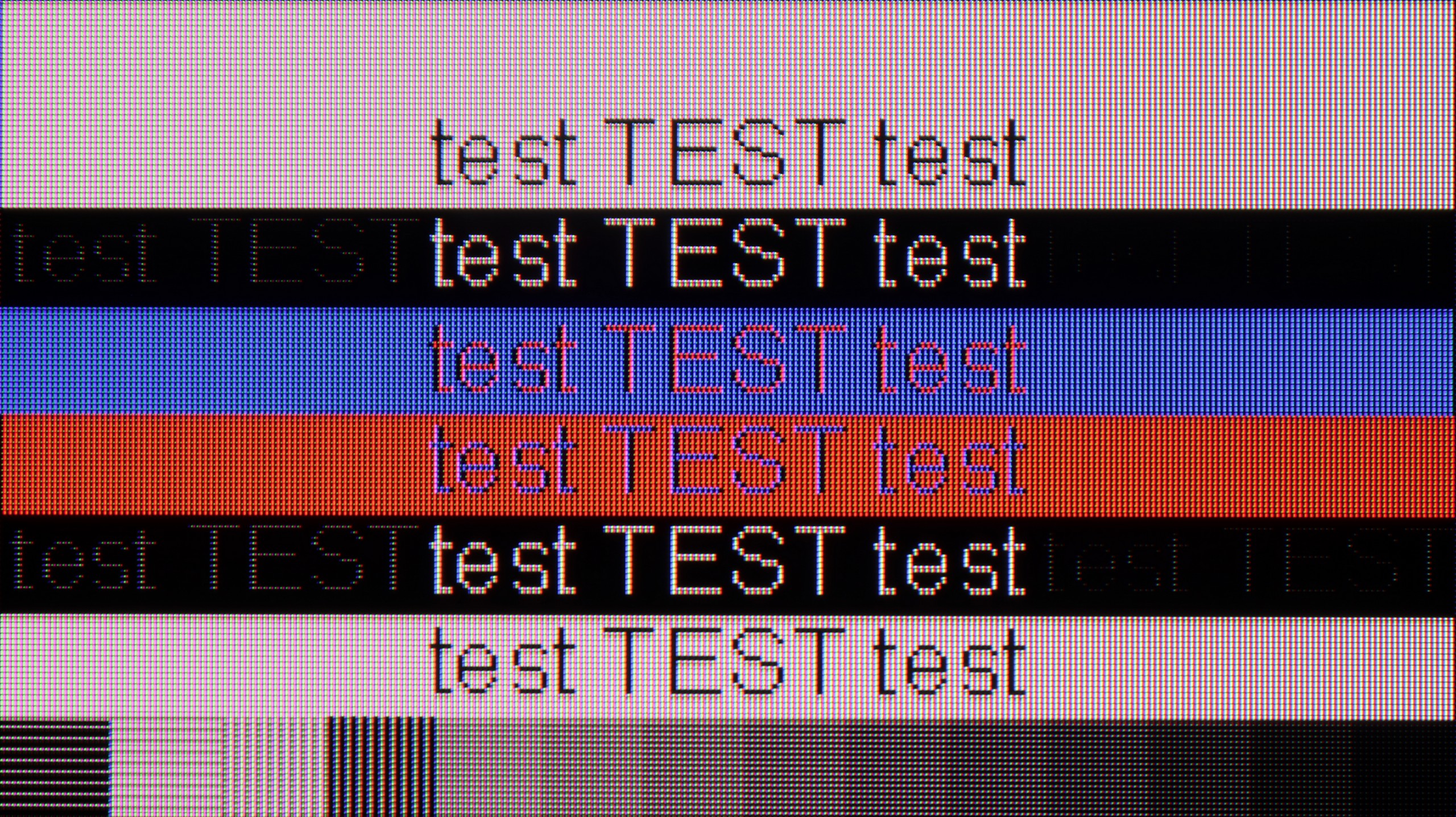
The TCL C69B / C655 television performs reasonably well in collaboration with a computer. Thanks to support for chroma 4:4:4, the readability of fonts is okay, significantly improving the comfort of use, especially when using the television as a monitor. However, there is one note regarding font readability – the television has issues displaying black and grey fonts, which sometimes have gaps in the vertical lines, potentially affecting user comfort in certain situations. Low input lag ensures responsive performance, which is important for both office applications and gaming. However, the 60 Hz panel and lack of G-Sync do not meet the demands of gamers using a computer, resulting in a lower score for gaming.
If we plan to connect the C7K to a computer – especially for gaming – there's definitely a lot to play with. We have 4K at 144 Hz, which already sounds great, but if we drop the resolution, the TV can even display 280 Hz. In e-sports, where every split second counts, this really makes a difference. On top of that, it supports G-Sync and FreeSync, so no matter what graphics card we have – the image will be smooth, with no stuttering or tearing.
But if we plan to put the C7K on a desk and use it like a monitor, it's a bit less "rosy." Sure, it supports chroma 4:4:4, so fonts should be sharp, but with very dark letters, you can notice slight blurriness and edge dimming. It's not something that immediately stands out during gaming or watching, but when working with text – it can be distracting. In everyday use – relatively worry-free, but if we plan to have a 50-inch screen a metre from our face, it's worth keeping this in mind.
Viewing angles
2.9/10
3/10
The viewing angles on the C69B TCL television leave a lot to be desired. The VA panel used provides excellent contrast and deep blacks, however, this comes at the expense of wide viewing angles. Compared to IPS panels, which offer better visibility from various angles, the C69B loses image quality when viewed from the side. Colours become washed out and the contrast deteriorates significantly. This is a typical compromise for VA panels – something for something. If you care about great contrast and deep blacks, a VA panel will be a good choice, but you have to be aware of the limitations regarding viewing angles.
There's no surprise here – the C7K has classic viewing angles for a VA panel. That is: we sit directly in front – it's excellent. Colours look good, contrast is strong, everything is in place. But just shifting slightly to the side starts to make things worse – the image loses saturation, the blacks turn grey, and the overall impression diminishes a bit. So if we plan to watch together with a few people or have a sofa that takes up half the lounge – it’s worth seating everyone more centrally. You can watch from the side, but don’t expect miracles – it’s simply a characteristic of the VA panel.
TV efficiency during daytime
4.7/10
6.1/10

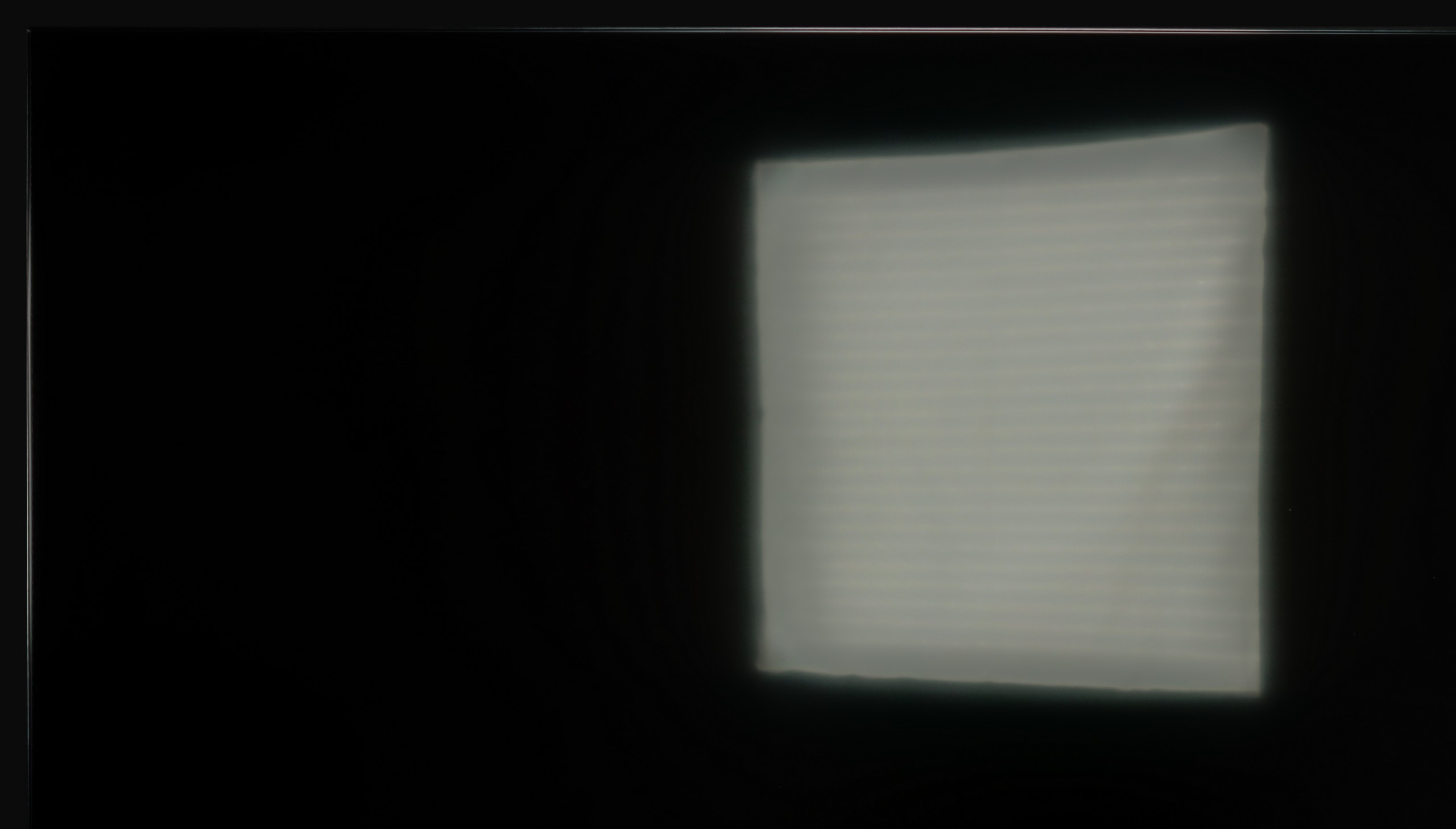


Matrix brightness
Average luminance SDR
TCL C7K / QM7K: 475 cd/m2
TCL C655 / C69B (43" - 50"): 346 cd/m2
The TCL C69B / C655 television features a satin-finished panel that moderately reduces glare. In bright rooms, this can cause unwanted reflections on the screen, negatively affecting viewing comfort. Additionally, a brightness level of 350 nits is not sufficiently high to ensure full image readability on a sunny day, making the use of the television in well-lit conditions potentially less satisfying.
Luckily, the TCL C7K performs quite well in bright rooms. The applied panel has a satin finish that effectively reduces reflections, so even on sunny days we don't have to worry about reflections from lamps or windows. Importantly, the colours maintain their intensity and don't wash out, as can happen with weaker matte panels. As for brightness, the average for content like YouTube or regular television reaches just below 500 nits. It's not a record result – for example, the MQLED85 (C765) performs better in this regard. However, for everyday viewing during the day, it should work without major issues, as long as we don't plan to place it opposite a south-facing window without curtains.
Details about the matrix
Subpixel Structure:

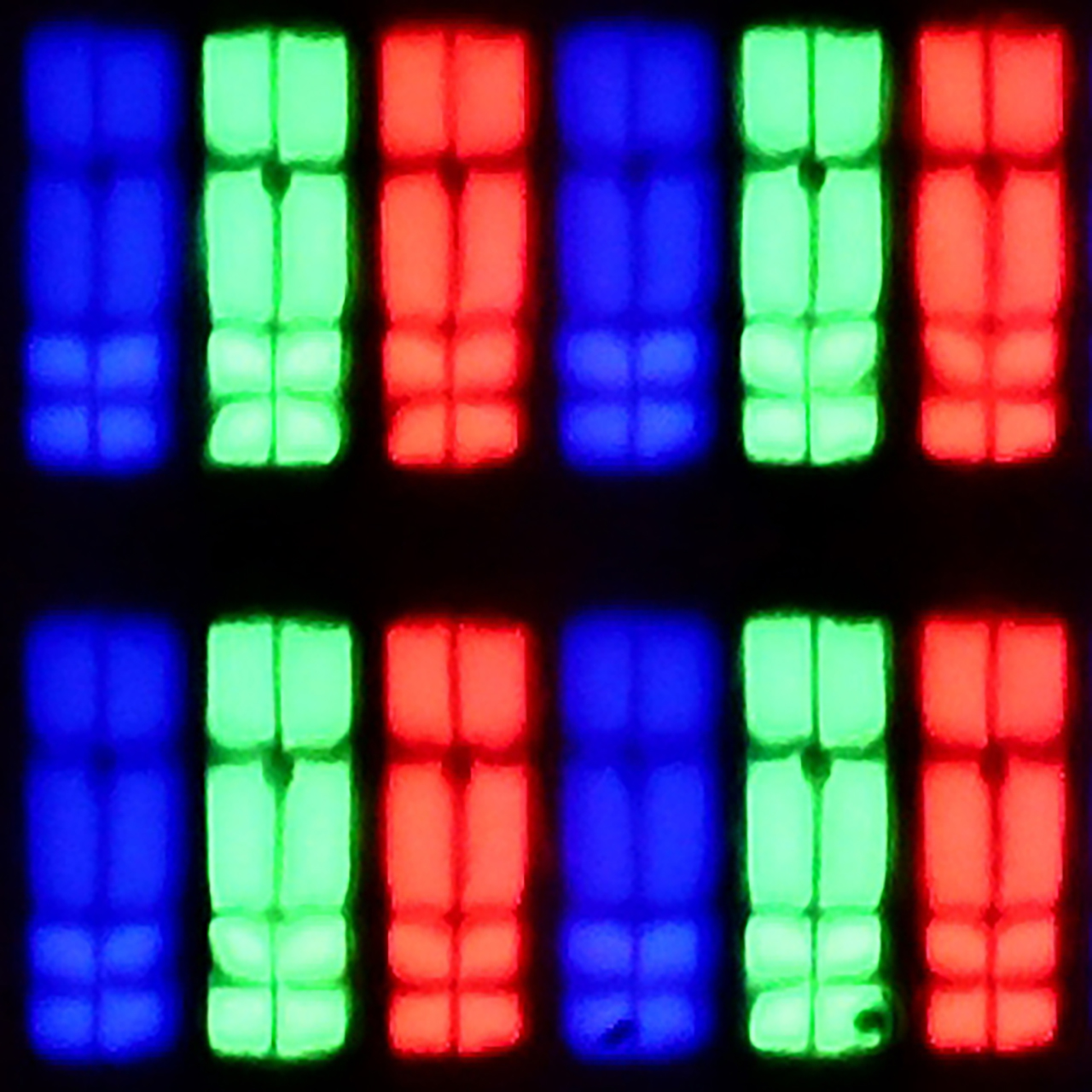
Panel uniformity and thermal imaging:

TCL C655 / C69B (43" - 50")
TCL C7K / QM7K
TV features
7/10
7.3/10
- HDMI inputs3 x HDMI 2.0, 0 x HDMI 2.12 x HDMI 2.0, 2 x HDMI 2.1 48Gbps
- Other inputsRCA (Chinch)
- OutputsToslink (Optical audio), eARC (HDMI), ARC (HDMI)Toslink (Optical audio), eARC (HDMI), ARC (HDMI)
- Network InterfacesWi-Fi 2.4GHz, Wi-Fi 5GHz, Ethernet (LAN) 100MbpsWi-Fi 2.4GHz, Wi-Fi 5GHz, Ethernet (LAN) 100Mbps
- TV receptionDVB-T, DVB-T2, DVB-S, DVB-S2, DVB-CDVB-T, DVB-T2, DVB-S, DVB-S2, DVB-C
Classic features:
- Recording to USB (terrestrial TV)
- Recording programming
- Picture in Picture (PiP)
- RF remote control (no need to aim at the screen)
- Backlit remote control
- Teletext
- Audio only mode
- Bluetooth headphones support
- Simultaneous Bluetooth headphones & TV audio
Smart features:
- AirPlay
- Screen mirroring (Windows Miracast)
- Voice search
- Voice search in native language
- Ability to connect a keyboard and mouse


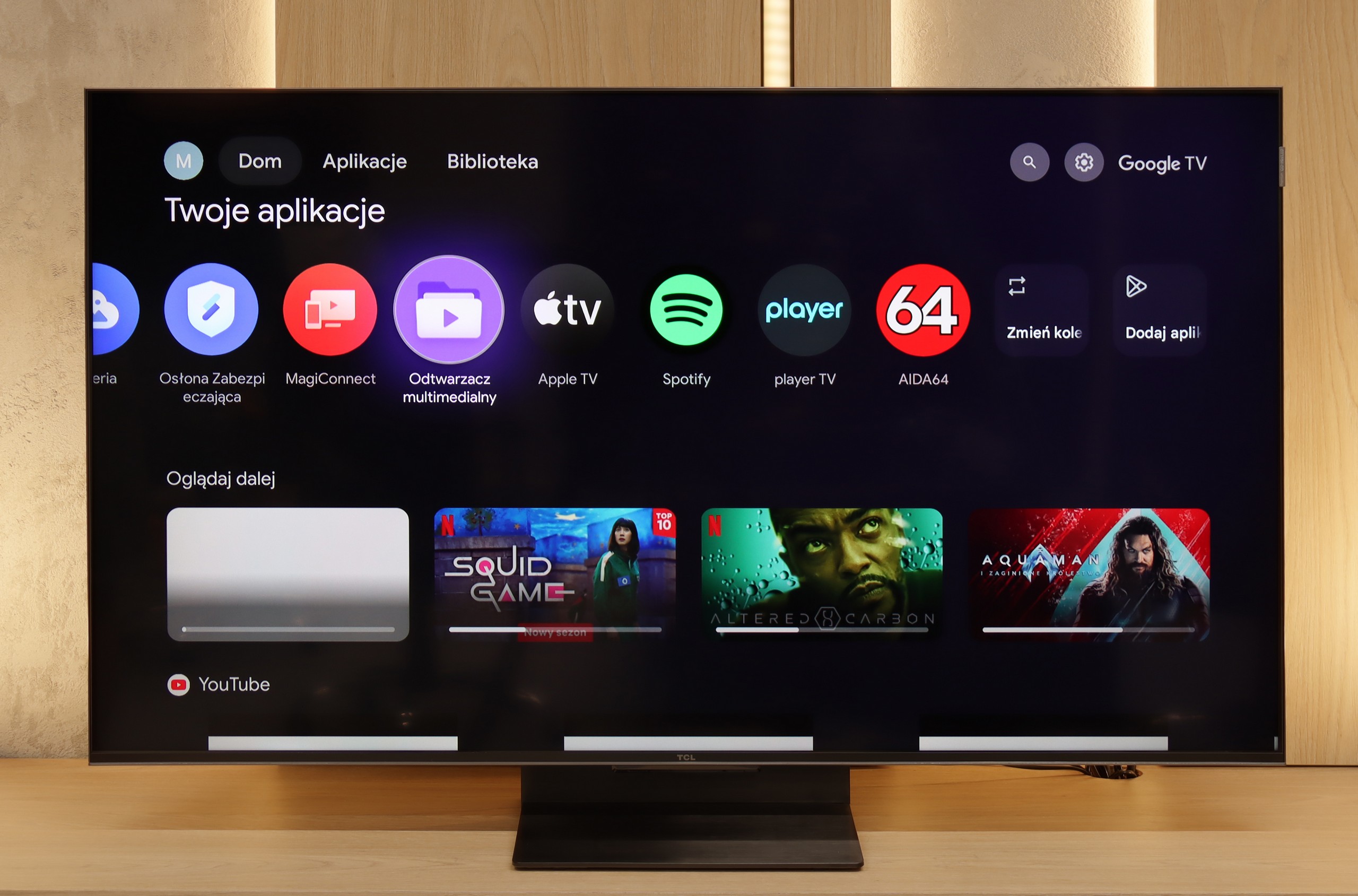
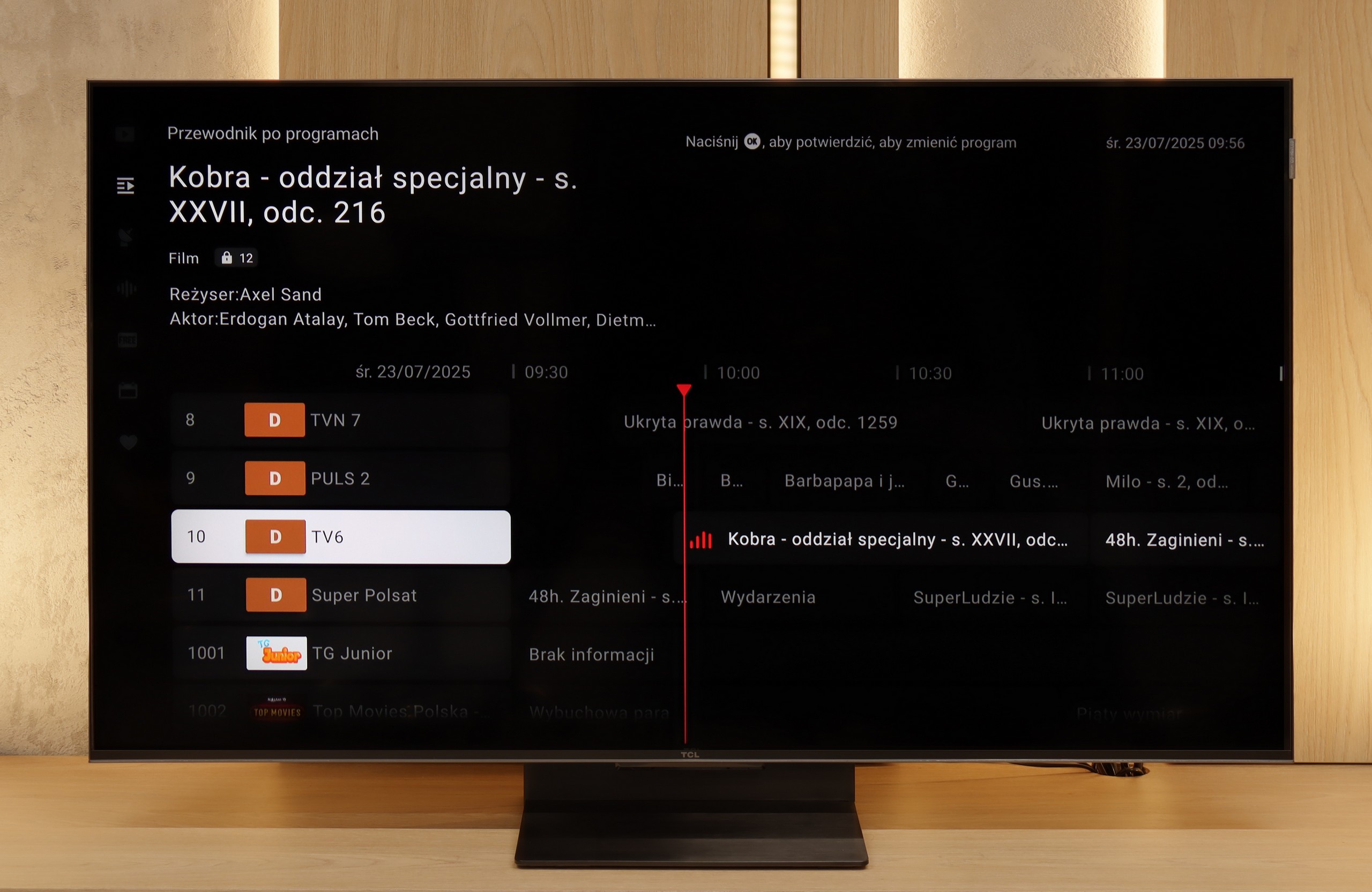
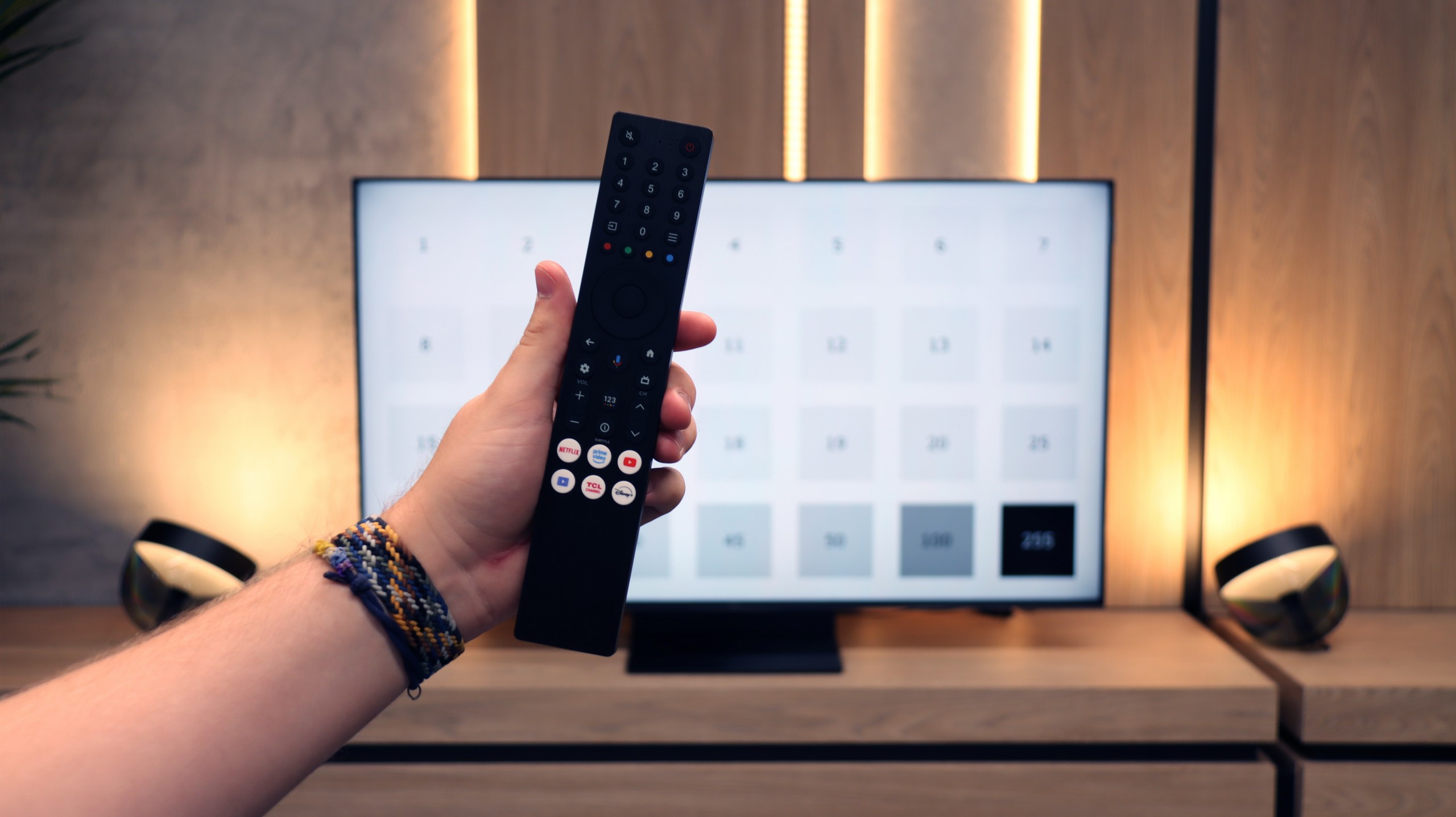
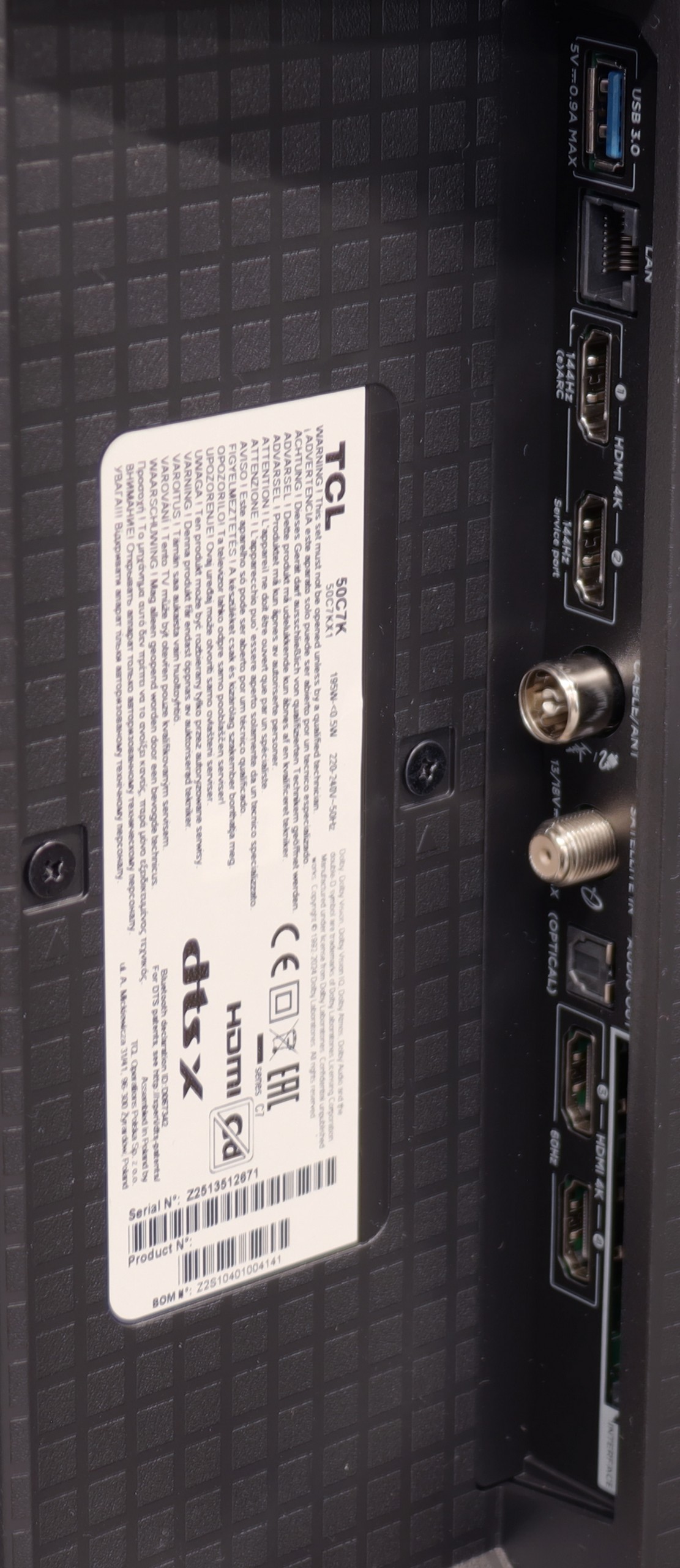
The TCL C69B / C655 television operates on the Google TV system, offering a rich set of features that enhance user comfort. Google TV is an evolution of Android TV, providing personalised content recommendations based on the user's preferences and viewing history. This allows for easy access to popular streaming apps, such as Netflix, YouTube, and Prime Video, as well as to the Google Play Store, where additional apps can be found. This system integrates well with other Google devices, allowing control of the television via Google Assistant and integration with a smart home system. Voice search is also available in Polish, which increases user convenience.
In terms of connectivity, the television supports screen mirroring via Windows Miracast and AirPlay, making it easy to stream images from other devices. There is also the possibility of connecting a keyboard, mouse, and Bluetooth headphones, as well as simultaneously using headphones and the built-in speaker, with separate volume control for both audio sources. The remote control operates on RF technology, which means it doesn't need to be pointed at the screen, significantly improving user convenience. Unfortunately, there are no picture-in-picture (PiP) features or recording functions from the built-in tuners.
SmartTV: GoogleTV
The biggest strength of the TCL C7K in everyday use is undoubtedly the Google TV system. It is thanks to this that we have access to an almost endless library of applications, including some more niche ones that are often unavailable on other platforms. The built-in Google Assistant understands Polish, so we can easily ask what is on TV, what the weather is like, and even give a few voice commands to control the television. The presence of Chromecast and AirPlay, which work smoothly and make life easier, is also a plus.
Usability Features
However, the traditional functions are a bit lacking. Of course, we have the basics – teletext, EPG, or the ability to connect headphones – but that’s pretty much where it ends. There's a lack of USB recording features or picture-in-picture (PiP) mode, which can still be found among competitors. It's also worth remembering that Google TV in the TCL version sometimes has strangely translated menu sections or minor interface errors. These aren’t issues that hinder daily use, but detail-oriented individuals may notice them.
Playing files from USB
8.3/10
9.2/10
Supported photo formats:
Maximum photo resolution:

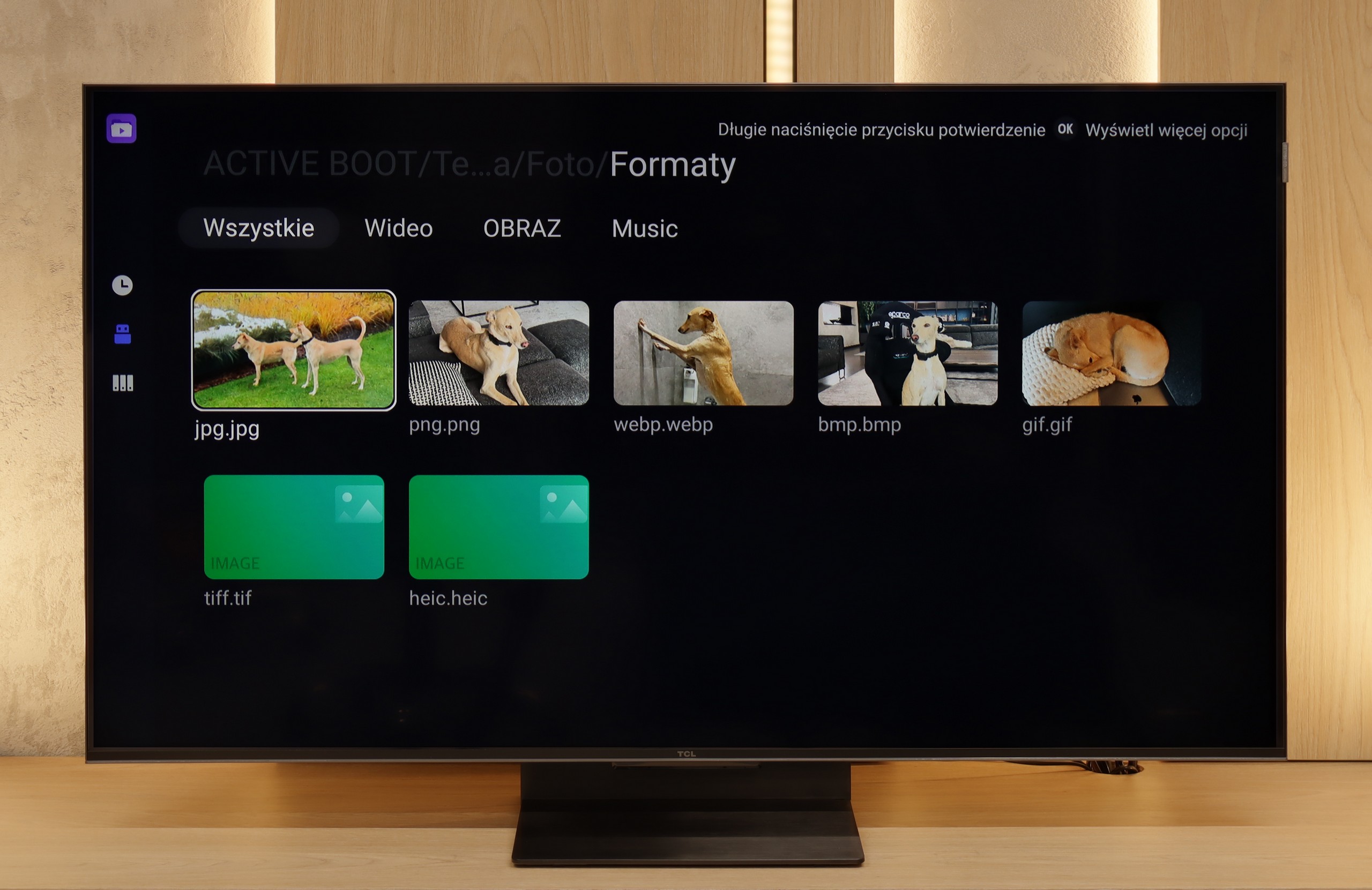
The television will play most files and video codecs, and when subtitles are loaded for the film, you can change the font size. The biggest drawback is the lack of support for less popular image formats. However, on televisions with Google TV, it is often easy to bypass this issue by installing a different media player.
The built-in file player in the TCL C7K performs really well. It supports most popular audio and video formats, so if we want to quickly plug in something from a USB drive and get it going – there shouldn't be any problem. Of course, as is often the case, you can find some minor shortcomings – not every exotic codec will work (Apple's HEIC), not all subtitles will be perfectly synchronised (txt.). However, the biggest advantage of this television comes to the rescue, which is Google TV. With access to the Google Play Store, we can easily install an alternative player, such as VLC, and then no files will frighten us.
Apps
9.6/10
9.6/10














































Sound
6.3/10
7/10
- Maximum volume0dB76dB
- Dolby Digital Plus 7.1
- Dolby True HD 7.1
- Dolby Atmos in Dolby Digital Plus (JOC)
- Dolby Atmos in Dolby True HD
- DTS:X in DTS-HD MA
- DTS-HD Master Audio
The sound in the television C69B / C655 is pretty average, which shouldn't be surprising given the speakers with a power of 2x10W. Additionally, we won't find a branded subwoofer here like in larger sizes 55+ from the company Onkyo. However, we can't forget about the support for audio formats such as DTS, which is a definite plus.
To be honest, we didn't expect much from the sound of the 50-inch version of the C7K model. Usually, in such sizes, it's hard to find anything more than thin, flat sound. But here – a pleasant surprise. The sound turned out to be really enjoyable, with good clarity and even a subtly noticeable bass. This is probably linked to TCL's new collaboration with the Bang & Olufsen brand, which is a novelty for 2025. Whether the C7K actually contains original drivers from the Danish premium brand – we can't confirm that. But the end result still deserves a thumbs up. For a TV without a soundbar – it sounds quite nice.
Acoustic Measurements
No acoustic data
76dBC (Max)
75dBC


